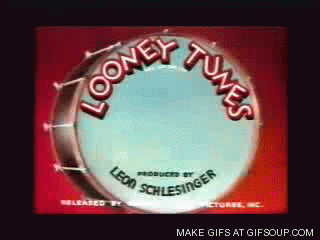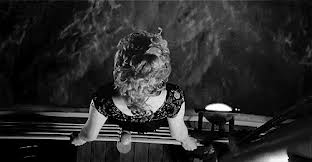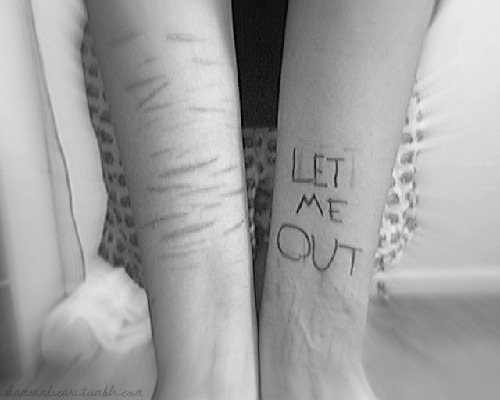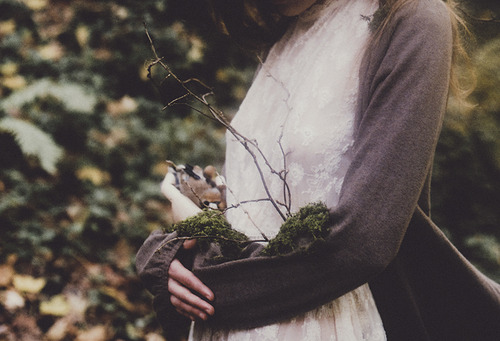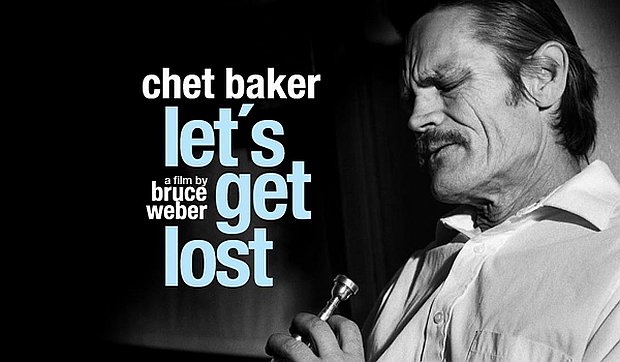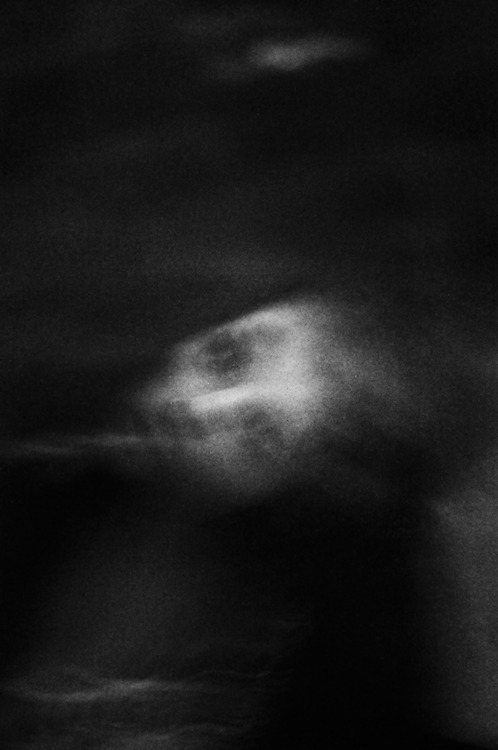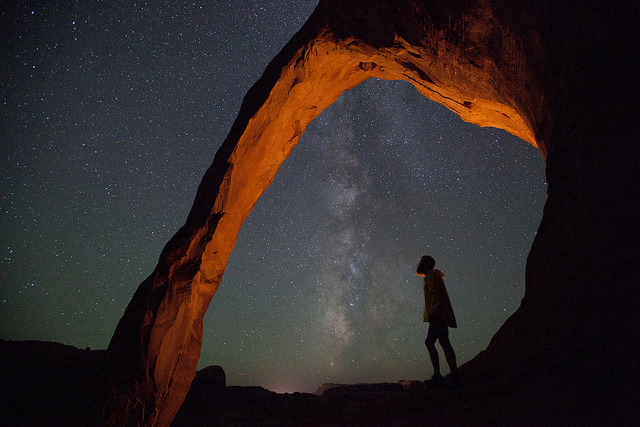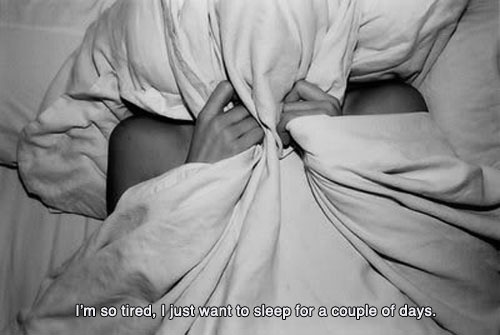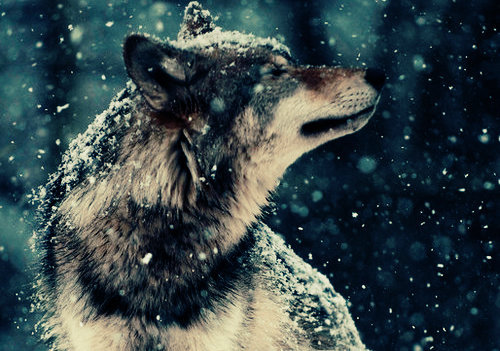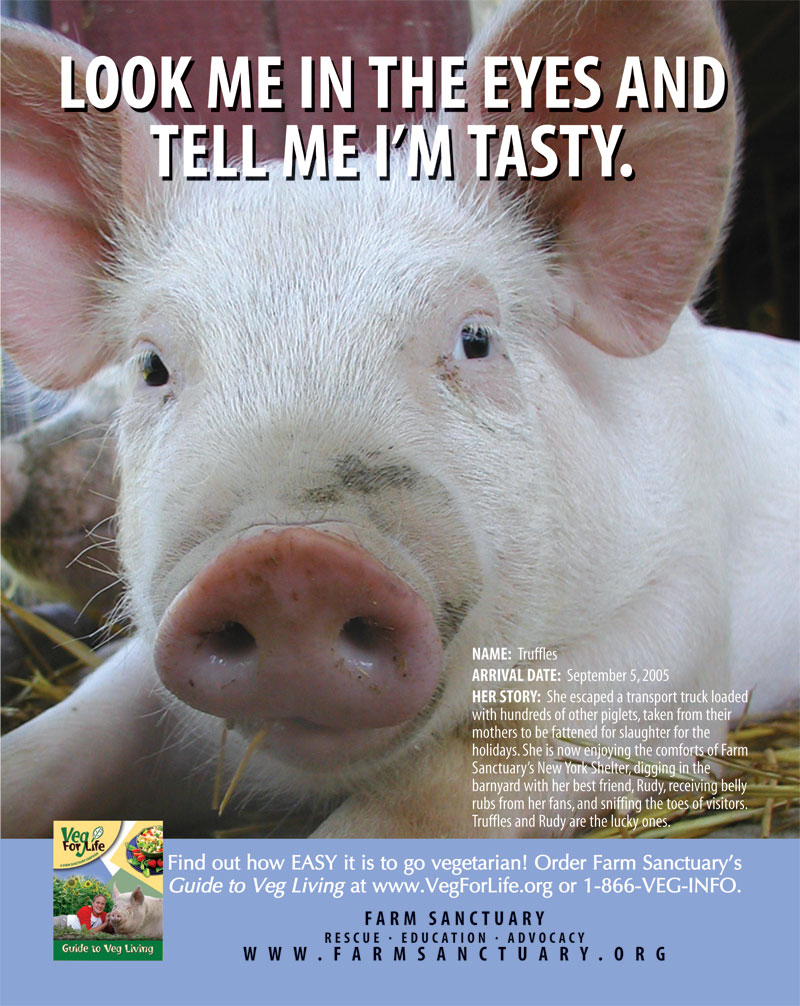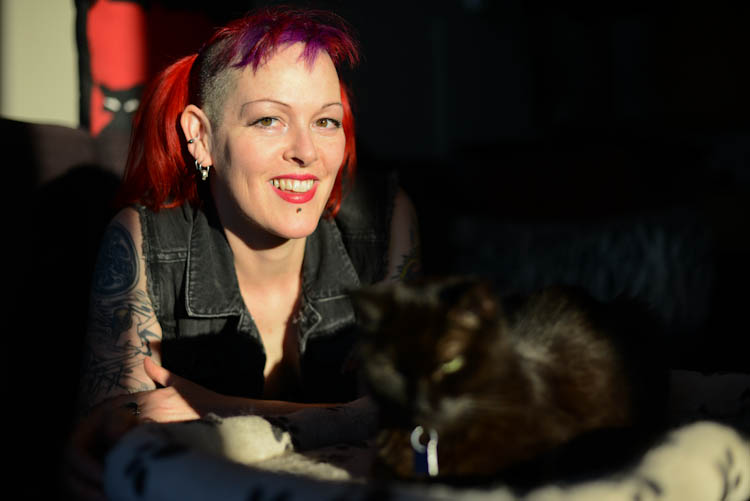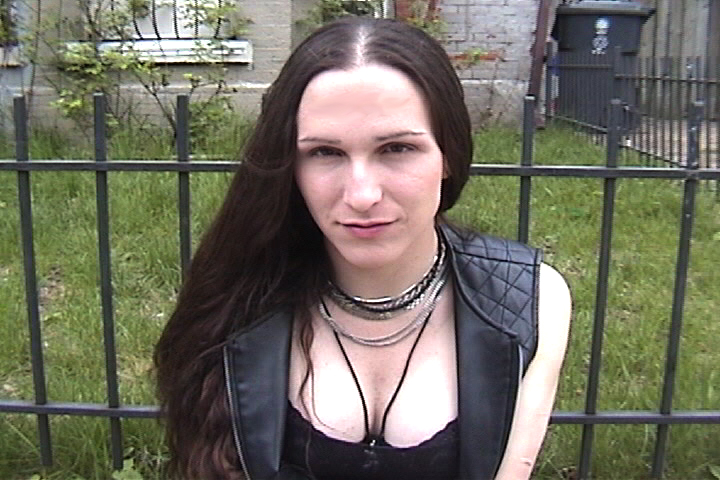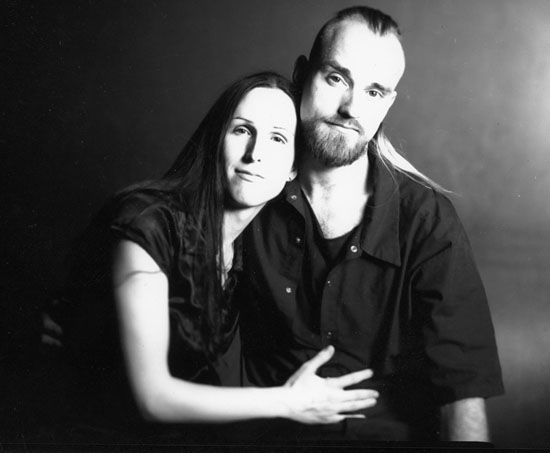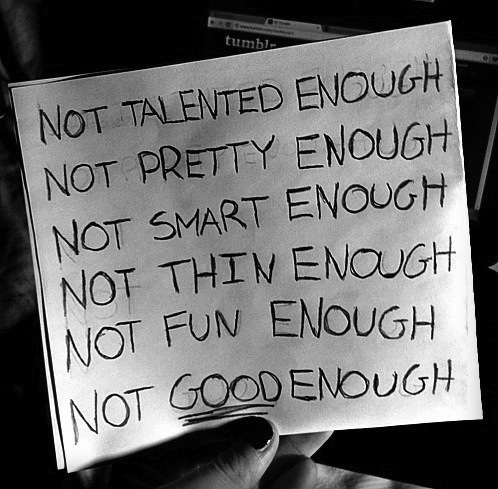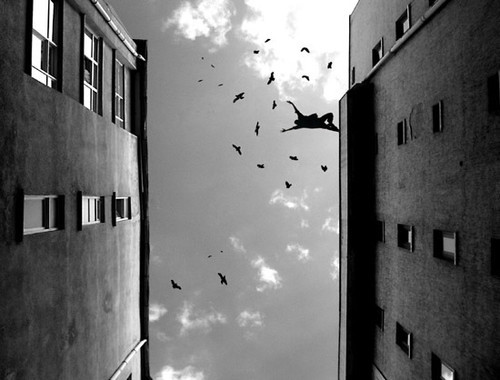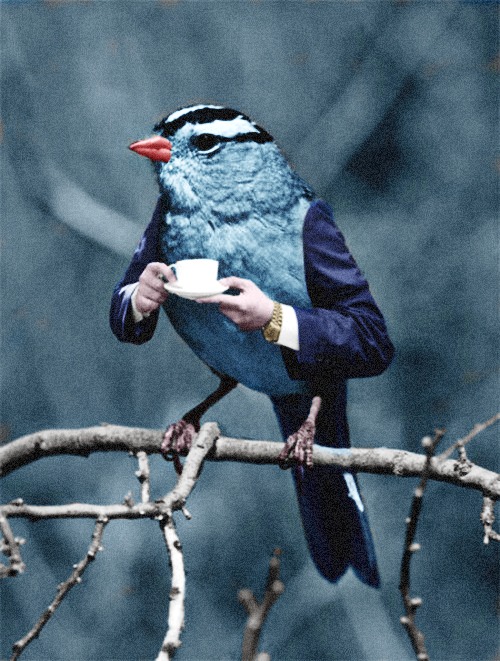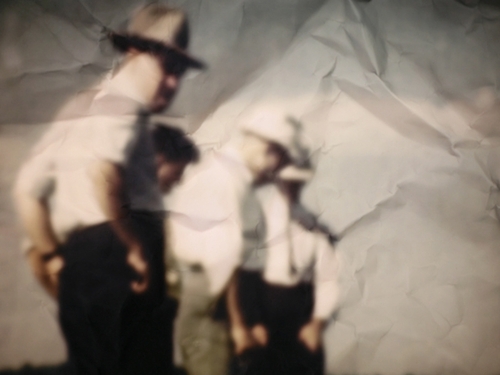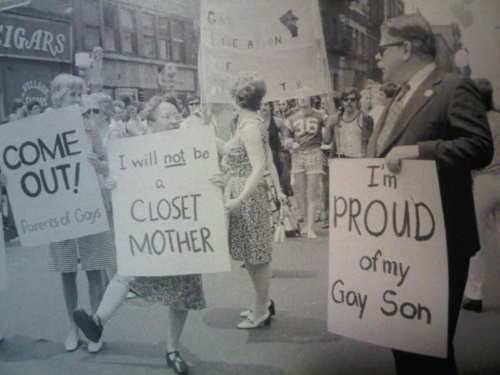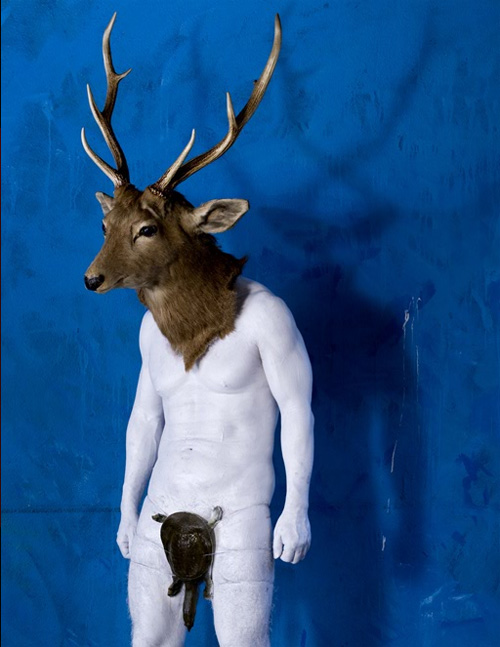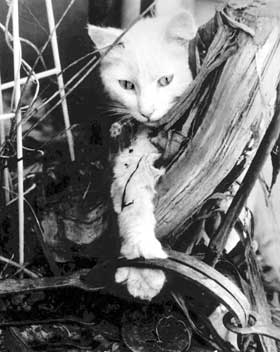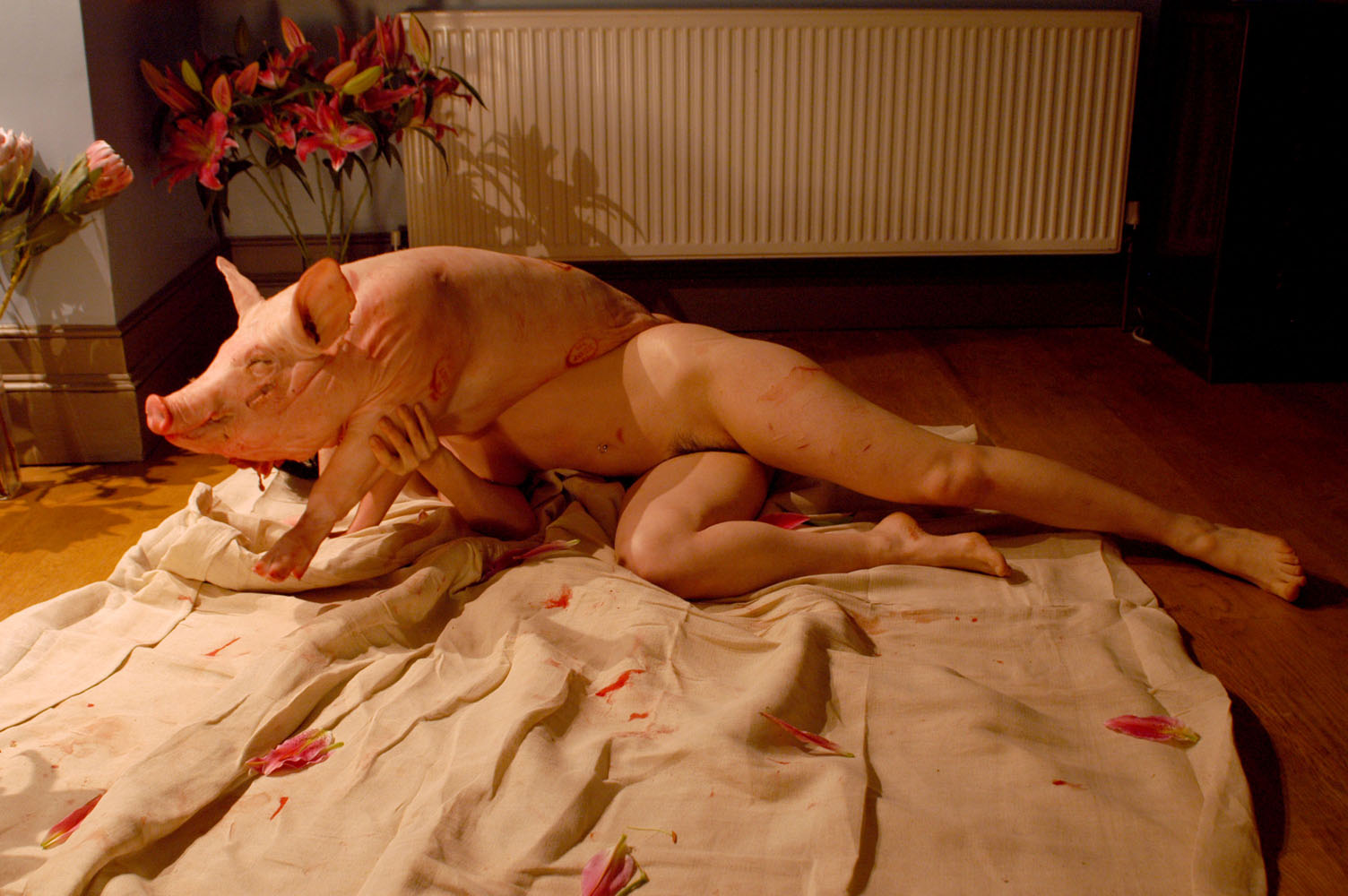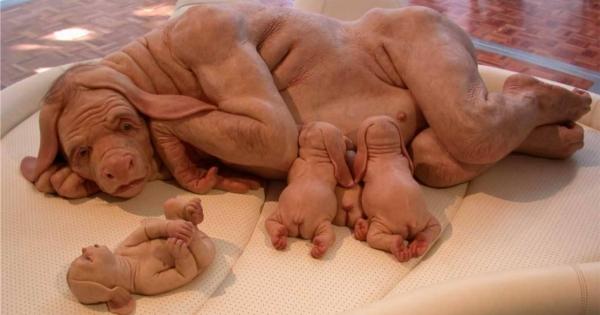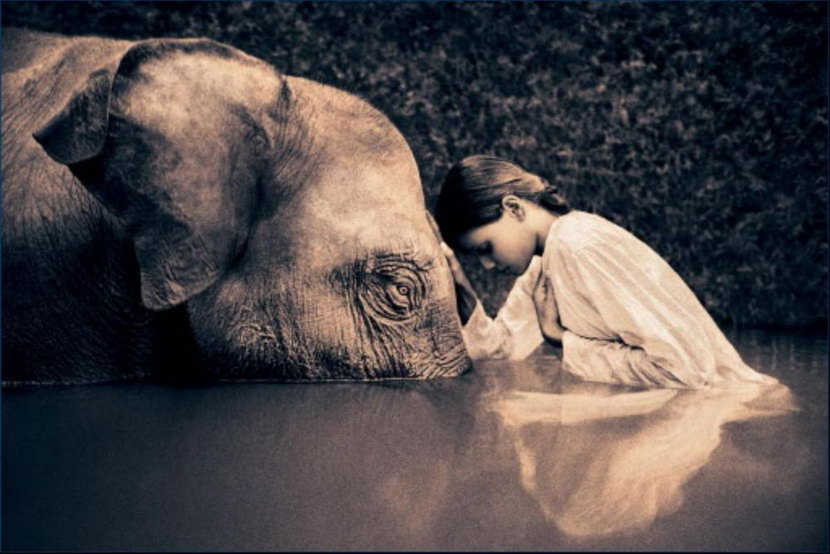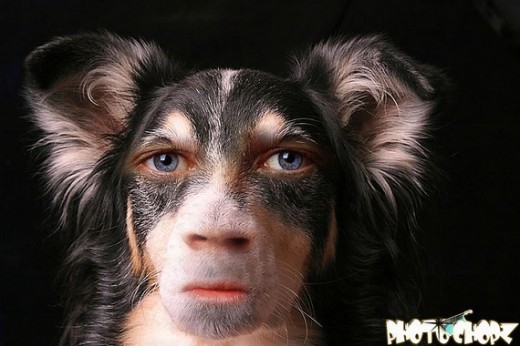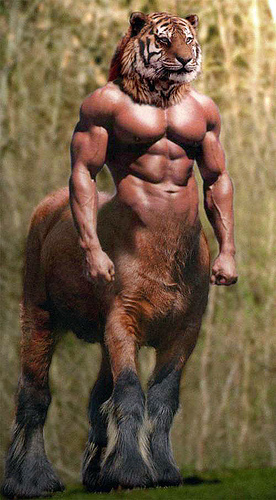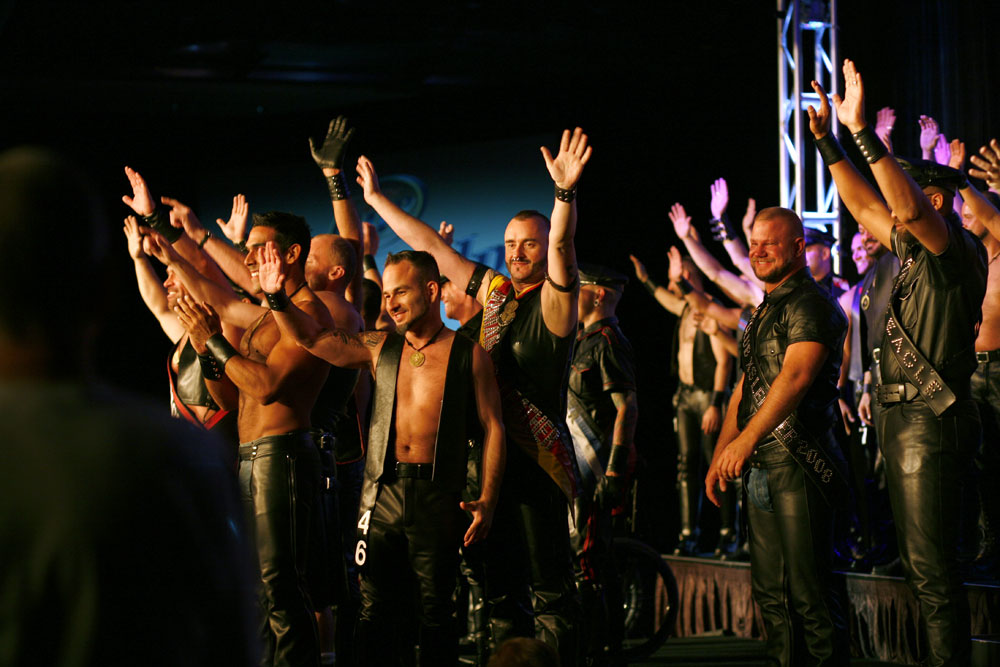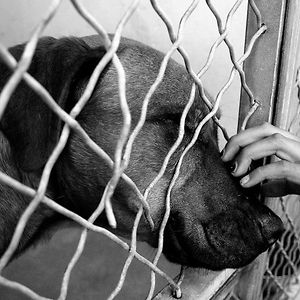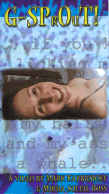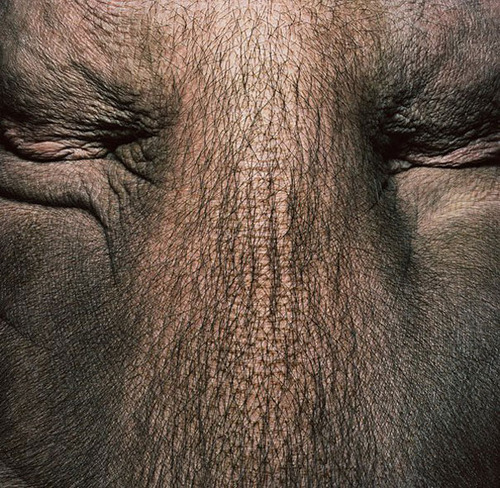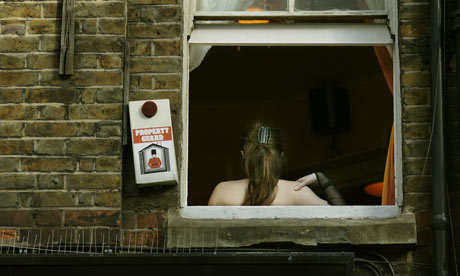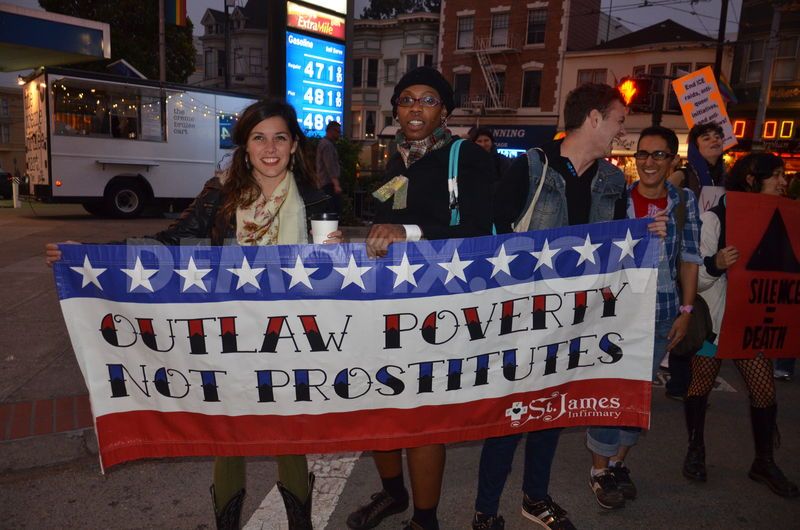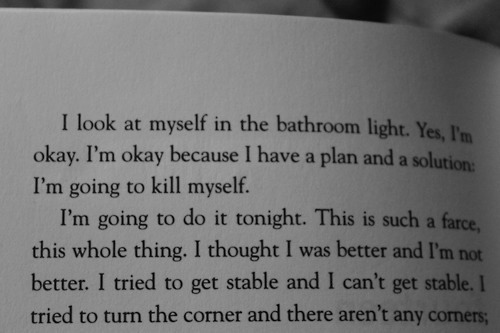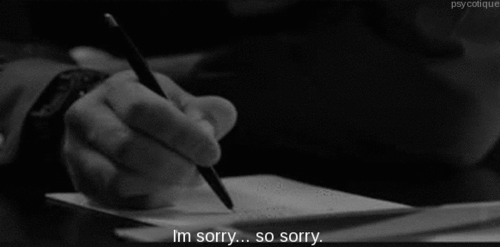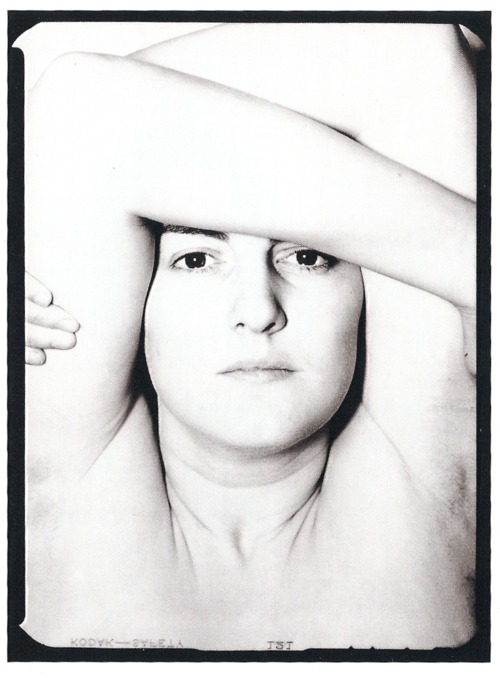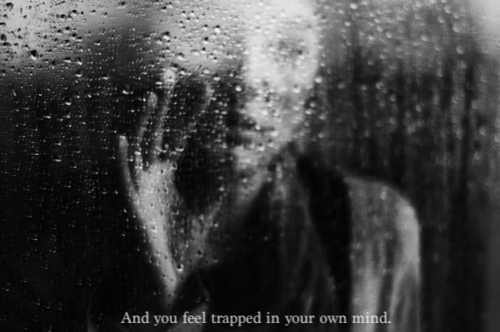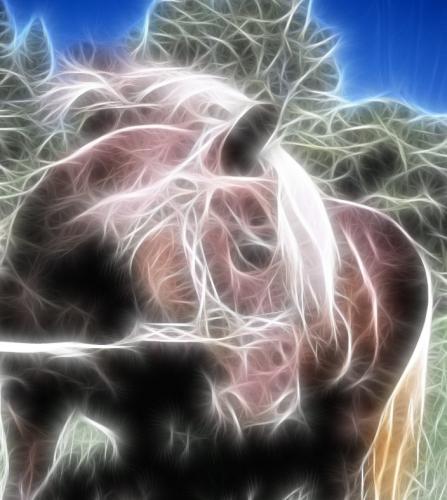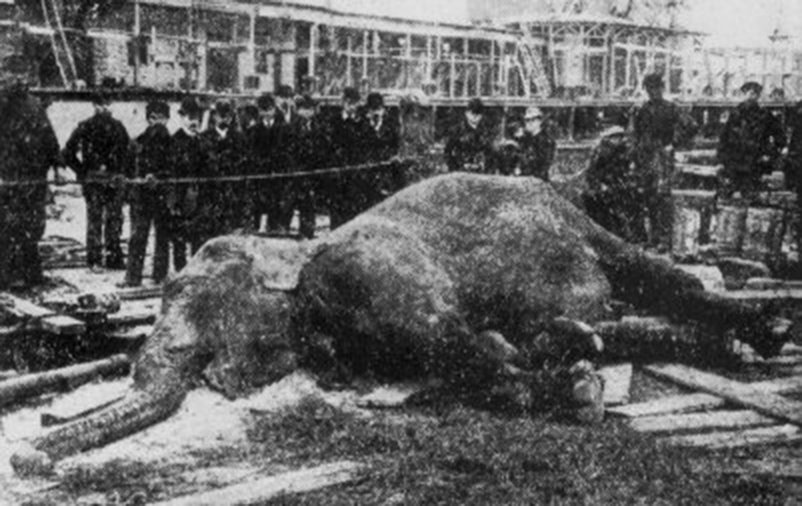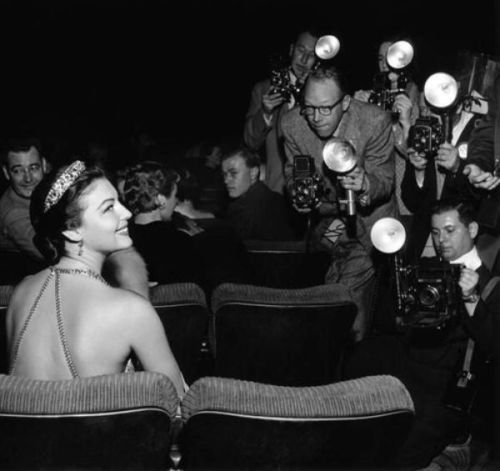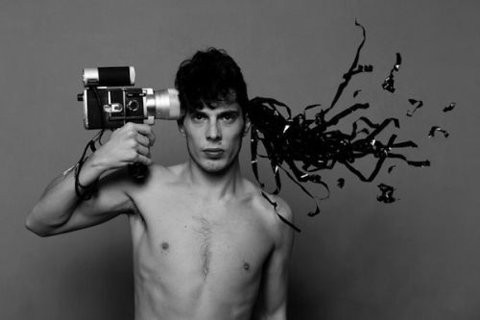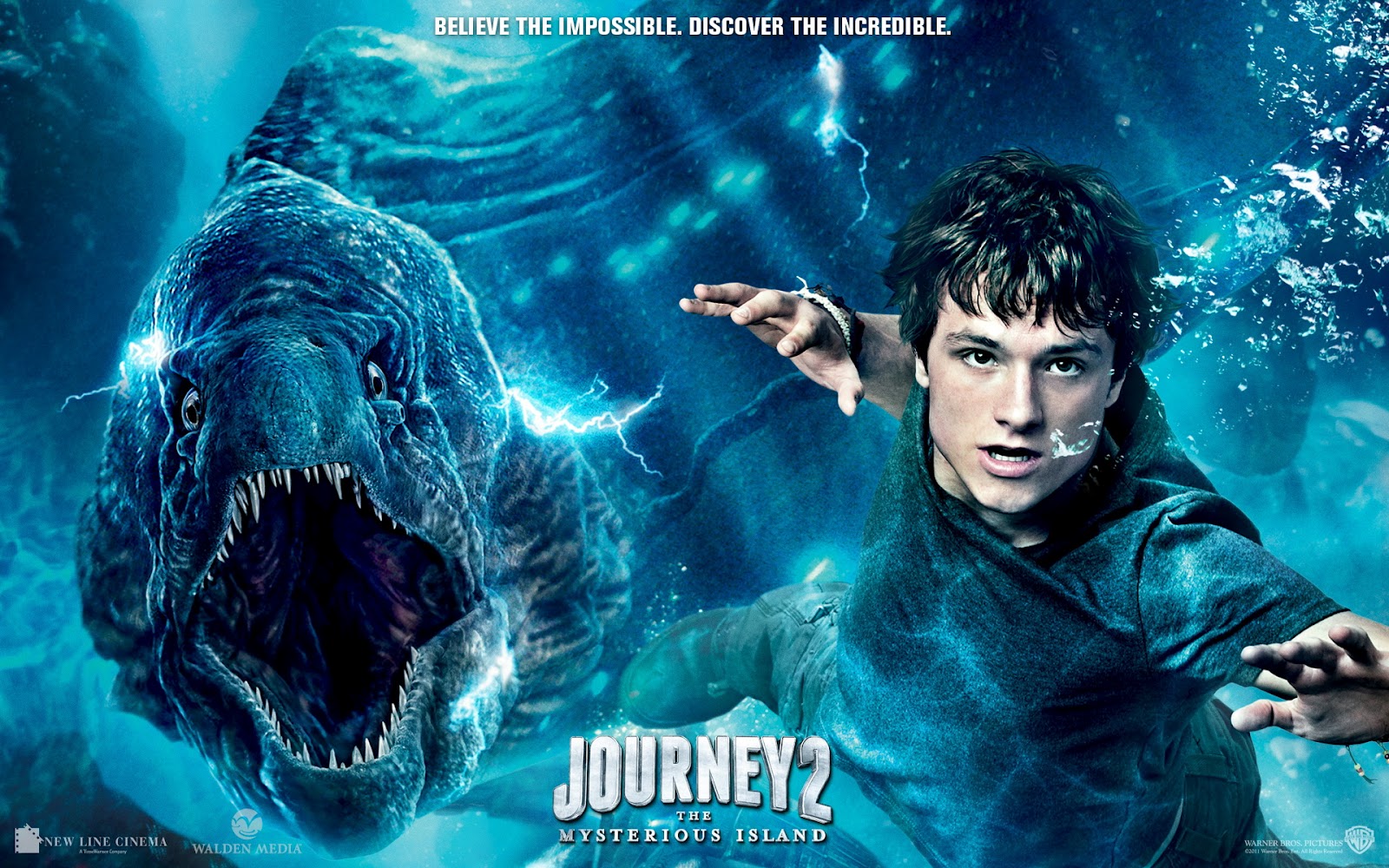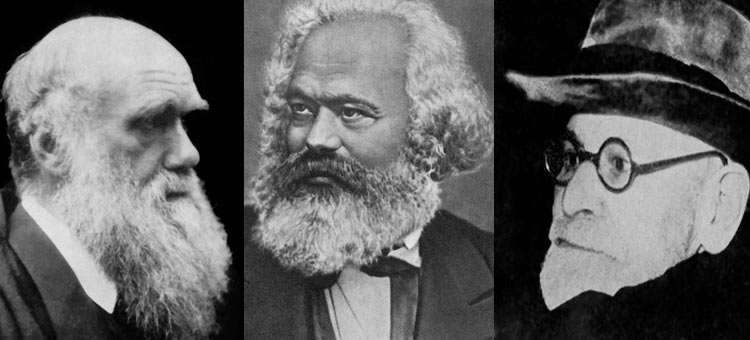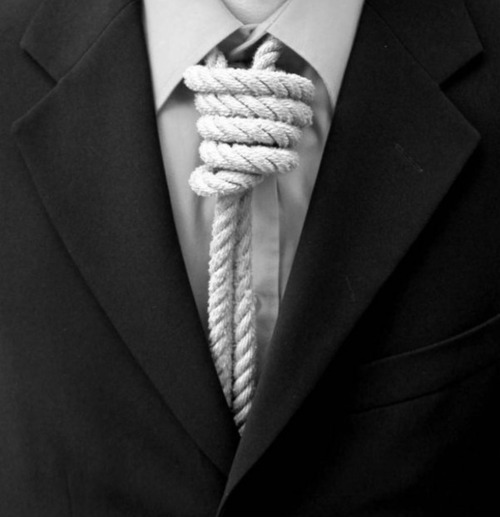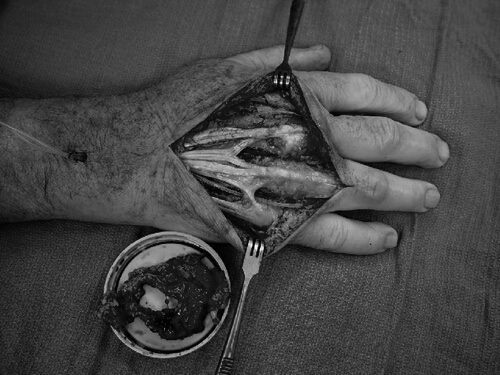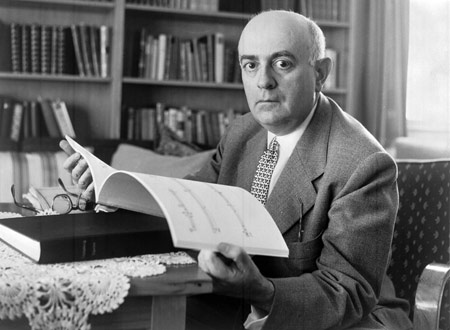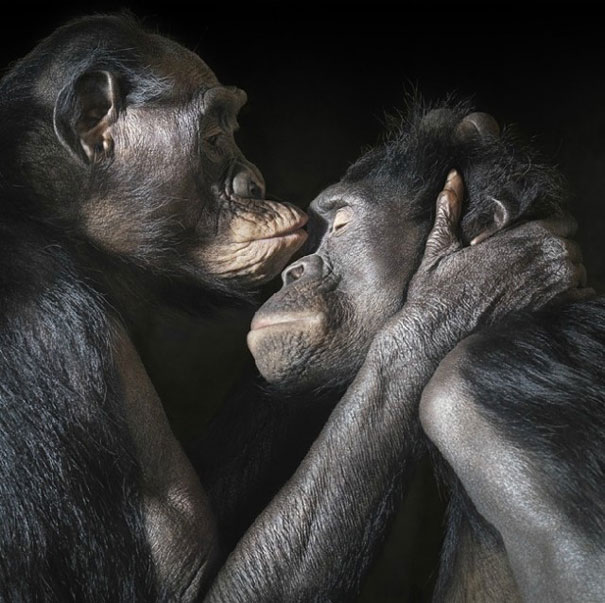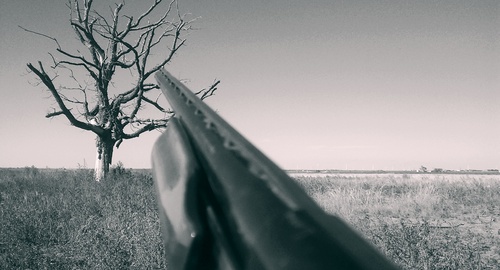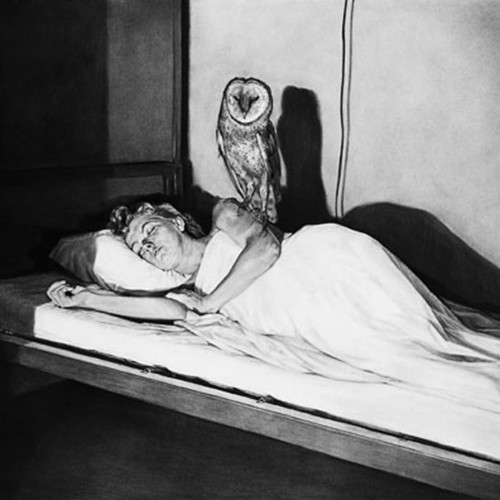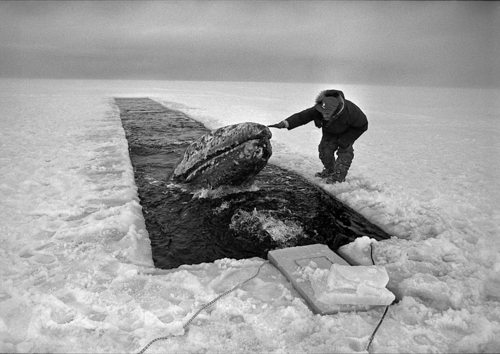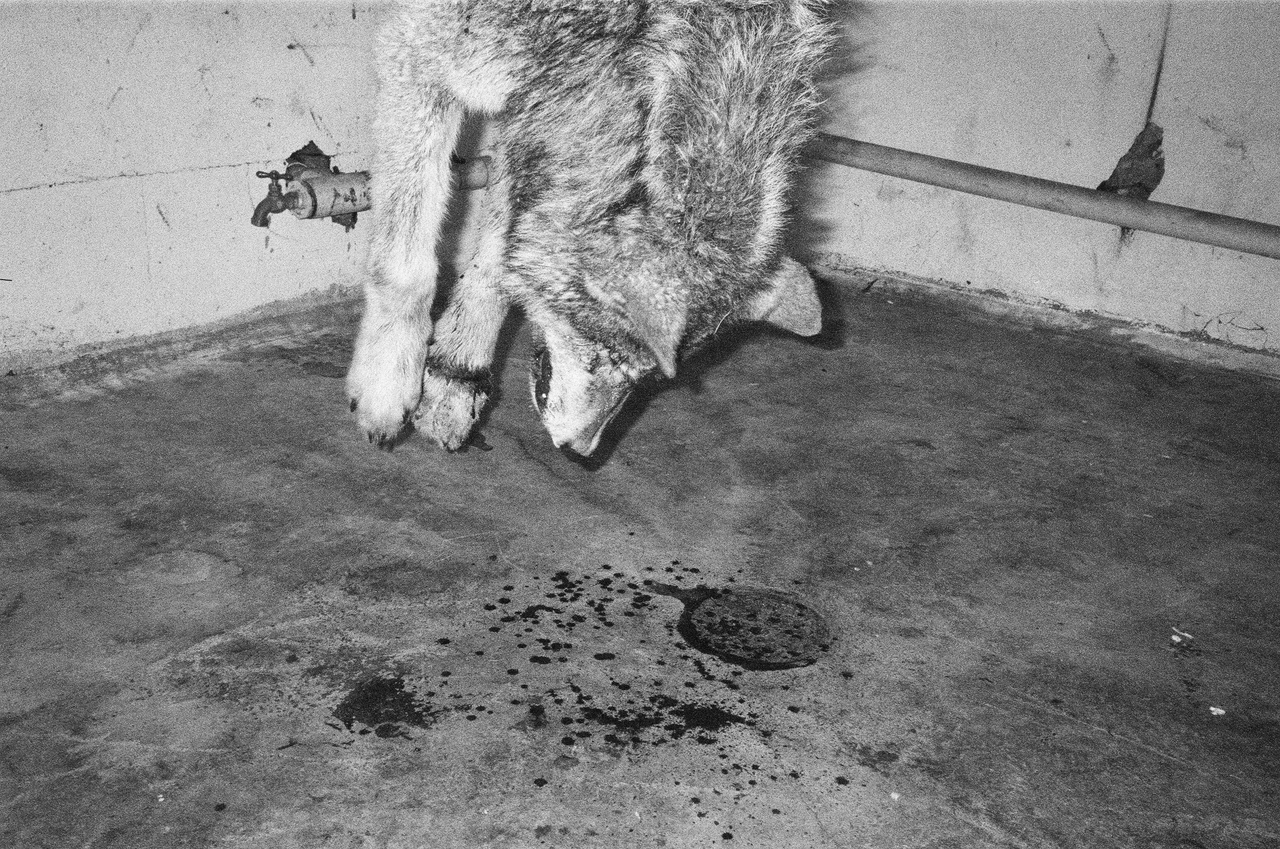Mark
His feet never seemed to quite hit the ground when he entered the room, blown in on some passing whim. He would greet me with a wave that came from the end of his scarf, and a “hiiii” that drawled the vowel so long we could both land on it. His name, which I glibly mispronounced for years without his ever once correcting it, was Mark Karbusicky. Mark was an editor and through six winters we sat together in the dark, sieving pictures through a computer, his large capable hands interfacing with the machine. I wasn’t able to see then the way his lightness was also a way of erasing every step, as if he were walking backwards through the snow with a broom, leaving no traces. Now you see me, now you don’t.
We made a portrait of my friend Tom, and then a collection of shorts which signed off with an extravagantly stuttering Porky Pig announcing, “Th-th-that’s all, folks.” Mark had a thing for these farm animals; like me, he was born in the year Chinese folks mark with a pig. And I can’t help thinking about the old woman over the bun shop who reads foreheads who warned me that every time the pig year rolled in—one in twelve—it would be time to face the music. To face what couldn’t be faced.
The year 2007 belonged to the pig, and despite all reasonable warnings I came to the cinema one April night with no sense of alarm. I think my whole life happens inside the movie theatre, every love and hope and failed dream lives and dies there. After settling into the frayed velvet seats, my friend Aleesa leaned close and said she had something to share when the curtain closed. Sure, why not. When the film was over she told me that Mark had hung himself with a dog leash. He was 35 years old.
In the following months I was fortunate to meet with some of his friends and family, and in these encounters he would flicker alive in our mouths and then cruelly disappear. New informations surfaced, old ones passed away. Andy, his best friend from public school, had his arm tattooed with Mark’s birth and death dates on it. Mirha told me that Mark had become a spider, and the next day Kristyn said the balcony plant she’d potted in his honour hosted the largest spider she’d ever seen.
There had been no previous attempts, he left no note, there was no obvious reason why. Many were certain that there was a story to be told, that we had been granted only the last page. So where was the rest? Mark and I had spent many hours together mostly dodging the inclination to squeeze pictures into easily storied containers; we had both seen how darkness can spread slowly over a picture, making it impossible to see even what was right there in front of us. News from the Gaza Strip, from Ho Chi Minh City, the streets of Sarajevo. There are entire cities which are buried in layers of invisible pictures. Mark and I kept busy working with small pictures, bringing them back into our computer archive where they could be endlessly re-edited and keep our own secrets company. Sometimes we succeeded too well. In all those years, how many things we never told each other, we never told ourselves.
He was a large man with a crooked beak of a nose and soft brown eyes that were better met when the light was low. They were so admitting they hurt to look at sometimes. The way he held himself shrank himself in stature, even when he was a hot breath away showing me, again and again, how to make the impossible work. His touch was so effortlessly light that it seemed like I was practically alone, figuring it all out by myself. It was an old magician’s trick he practiced, the fine art of disappearance.
As long as I’d known Mark he was always telling me, “No problem.” One leg kicked up behind him, his arm bent into a backwards wave, head raised up in the air. There were no problems which belonged to others that he wasn’t busy patching, mending, attaching himself to. Which made us wonder how someone who had spent his life in service should have left so little for himself. He was busy feeding feral cat colonies around the city. He organized rallies against animal testing, provided years of research and technical support for a weekly animal-rights radio program, worked always with the poor and disadvantaged. And he had been shooting a movie.
It was about pigs, of course. He had made his way over to the Tecumseth Street slaughterhouse, in Toronto, drilled holes into the metal siding and built some kind of periscope arrangement so he could mirror pictures into his video camera. He was obliged to make these arrangements because, like all slaughter houses, this is a strictly no-camera zone—and for good reason. A cutting room floor awash with blood and freshly cut corpses is not the image that a meat-eating nation wants to promote. Animals are routinely skinned and gutted while still alive owing to the speed of the operation. And behind the camera black-out there are other problems. Injury compensation remains low, supervisors are given bonuses for minimizing recorded injuries and high production.
When Mark’s movie was finished, I expected that we would sit down over a tape recorder and I would ask him about the why and how and what of it. An old habit perhaps. As I grow older, my relations have become increasingly professionalized, drawn to some purposeful end, connected invariably to work. A first book of interviews with Canadian movie artists was released in 1999, and then another ten years later, owing to the grace of Coach House Press. It is much too large and contains too many artists, but Mark never took enough time out from helping others to make his own film, and we never got to have our talk. So while our time together has shaped much of what I know and understand about movies, and thereby underlines many lines of questioning in the book, his own words are offscreen, off the page, once again invisible. If only he had. If only I could have. If only he hadn’t. With a deadline hanging over us, we might at last have begun to talk about some of the things we had left too long in the dark, or allowed pictures to say in our place. Will I find the words with those left behind, I wonder, the words that will be nowhere recorded or part of anyone’s record. Not the first words—it is too late for that—but some small words of kindness that might offer an opening for those who like to sit in the back row, silent in their own darkness, waiting for their chance, their turn.
(April 2008, commissioned by Shaun Smith for the Pages Bookstore Website)
Mark Karbusicky (1972-2007)
Mark and I spent many hours together in the dark, looking in the same direction, watching pictures. For the last six years he has been coming with me to Charles Street Video and editing my movies, which are known most of all for their editing, Mark’s contribution. I think this role of editor is very typical for Mark, which allows someone else to realize their hope, while he remains quietly in the background. Working. He was always working. An editor brings together moments which seem impossible. An editor has an eye for what is held in common, qualities that are shared between people or events, which seem far apart. It’s a way of working, but also a way of living in the world, of seeing these connections, of living these connections.
For the first few years Mark would always arrive with a large knapsack, which would contain either two cans of Jolt Cola, or a single, oversized bottle. Long sessions meant three cans. He drank every one as if it was the first.
There’s one other person I know who has Mark’s talent for relentless optimism. It is so consistent that I realized quickly that this is something he’s worked on, the way others would work at making a perfect cup of coffee or getting down a blues lick on the guitar. Almost every day I saw him Mark would offer some cheerful recipe which he applied the way others put on bandages. He did it so often and so well that it gave me a hint of a darkness that was all his own. It was a darkness that required tremendous diligence and watchfulness, and the fact that he was able to do it with an airy lightness, insistently turning it into something positive and affirming, I really marveled at it.
He was so large and capable, it just seemed like he knew how to do everything. If there was a problem it was only a question of time before Mark, who so very rarely exhibited impatience or frustration, would offer another way of looking at it or approaching it. He would cheerily tell me not to worry, he would be able to fix it, and he always did. Mark was always busy fixing things, and smoothing out difficulties.
It wasn’t until I saw Let’s Get Lost by Bruce Weber, that I could look into the wasted face of Chet Baker, and feel the pain that lay underneath all those sweet beautiful songs, the pain that made those songs possible.
The last time I saw Mark was in my apartment, sitting in the chair where I spend most of my life in front of the computer. We had finished this very long journey of a film, and he had always been urging me not to work at the co-op, but to work at home, alone, by myself, the way he did it, even though it meant that I wouldn’t be hiring him anymore. For anyone who knew him, I think they would recognize this gesture right away. There was never any thought on his part that he might be losing something, so he came to my place to give me his editing software, and he put it on my computer in his thorough, oh so careful Mark way. He insisted that we had to boot up the program and try it out, and then close it and then start it again, so that we could both be sure that it would absolutely work. He has been a model of kindness for me these many years, a kindness, it seems that he was able to extend more easily to others than to himself. I miss him very much.
May 2, 2007
Pictures of Friends
(for Ambulante Catalogue, December 2009)
Two months before he died, my friend and long-time editor Mark Karbusicky came to see me for the last time. He arrived at my apartment with a new crimson scarf that seemed almost as long and light and billowy as he was. How it fluttered behind him when he floated into the room on his ghost feet. He had come with new editing software which he installed on my computer, and left me with a small library of manuals ensuring that there would be answers to even the most impossible questions. I didn’t realize then that he was saying good-bye. As I came to know his friends and familiars it seemed there were small indications, all well buried beneath any detectable standard, that he was getting ready to leave. I have often wondered if he knew himself.
After the unthinkable occurred, and this strong, go-to, handsome punk geek was dead at the age of 35, I began making a movie about him. Collecting fragments and testimonies. Because we’d both grown up in the same west suburban enclave, I returned to what used to be home, recording moments in the nearby parks and streets and neighborhoods, often with my teenaged nephew Jack who bore, at least from a hazy DV distance, an uncanny resemblance to my friend in some younger incarnation.
Each witness in the movie required their own approach, and I was guided in this task by my experience of making Fascination (70 minutes 2006), an almost biography of Canadian video artist Colin Campbell. It is a movie filled with his friends and former lovers and art scene hauntings. I hoped to avoid the journalistic commonplace of arriving in a maximum impact moment with gear in hand, ready to soak up a stranger’s tragedy with my camera eye, preferably while they were still rawly fresh and real. To chase and plunder misfortune, to simplify and render it transparent, and then to abandon the scene, these are the hallmarks of what we daily absorb as objective journalism. This timeless haste, bent underneath deadlines, provides the most familiar form of the documentary, and is usually named, and without a hint of irony, the news.
I tried to step into the lives of Colin’s friends when the new floor was getting laid out, or the barbeque required stoking; there were birthday parties and movie flirtations. Most often it was only in the initial meeting that a recorded conversation about Colin made sense. If I failed to pull out the camera on contact, there was no way to meet them again for the first time. When I made recording dates after our initial meetings they seemed as if “they were not themselves.” Something didn’t ring quite true, in other words, they had already become fiction.
If one is patient, however, and can get over this secondary period that lies beyond the initial fever of encounter, then something else can happen, some measure of trust can accrue, and many moons later, as a camera is introduced, they may be able to say things they have never thought about. Only then are they able to articulate feelings, whims, hopes that are occurring to them for the first time. Instead of making a record of what has happened in the past, these recordings are moving alongside their life, even if they are sitting in the same chair, offering the same stories.
Because my pathology as a maker is to be always finishing (ABC, Always Be Closing), I admitted each new witness into Mark’s movie with great reluctance. At the beginning it was always the same: feelings of obligation mixed uneasily with resentment, even anger, that I should have to go and speak to someone new. What I wanted instead was simply to create a movie out of the remnants of footage that Mark might have left behind. But, at least initially, I had no access to this footage, nor did I know what it might contain, or whether it might be at all useful, so I was forced (or granted the opportunity, the door generously opened) to meet up with at least a few of his closest friends.
I had caught the tailwind of estimable American essayist Joan Didion while she was book touring A Year of Magical Thinking. This volume recounts, in her plain speaking and merciless style, the death of her husband John and the illness trials of their daughter Quintana. Quintana was so sick Joan had to tell her twice, on two separate occasions, that her father was dead. Even in the midst of this catastrophe, she decided, with a nearly inhuman sobriety, that she would write the novel within a year, because grieving unravels in a multitude of shades and phases, while this locked time zone would guarantee her writing would hold its shape. She finished 88 days after her husband dropped dead at their dining room table. I took her announcement as a cue, and similarly resolved to interview all of the principals within a year of Mark’s death. How inestimably kind they were to grant admittance to this stranger, someone barely rumoured in Mark’s segmented life, and open their wounds at exactly the moment when they were most vulnerable.
“If the Greeks invented tragedy, the Romans the epistle and the Renaissance the sonnet, our generation invented a new literature, that of testimony. We have all been witnesses and we feel we have to bear testimony for the future.” Elie Wiesel
Lorena Elke is a witch and animal rights activist. She had acted as a kind of spiritual advisor to both Mark and Mirha-Soleil, and had often come to their apartment to perform rituals for their dying cats. Because they all made a habit of adopting street cats (ferals), no matter how much care they lavished on their animals, many were in bad shape when they were coaxed in from the cold, and died sooner than later. Lorena still maintains a brood of nearly a dozen animals, that had commandeered the basement when I met up with her, while ground level was reserved for upright mammals and Liz’s almost-human dog Troy.
Lorena talked about Mark’s involvement with SHAC (Stop Huntingdon Animal Cruelty), a campaign begun in England to stop Huntingdon Life Sciences from continuing animal testing. Huntingdon has upwards of 70,000 animals onsite, and accepts contracts to study the effects of pesticides, herbicides and food additives on their caged staff. Activists have made their way into the lab and documented systemic animal abuse on numerous occasions, and Mark had some of these videos in his archive. They were grisly and horrifying (surgeries without anaesthetics, beatings, orifices plundered) and Mark loved them. Perhaps they were necessary reminders, lending fuel to his quiet fire. When he started making movies of his own, this was the material he turned to.
Lorena showed me a photograph made by her partner Liz at the Farm Sanctuary, a cherished destination in upstate New York that rescues and rehabilitates farm animals. Liz and Lorena had just uncovered each other, and had been invited by Mark and Mirha in part so that Liz could shoot Mark playing with the pigs, his fave animal and Chinese familiar. The picture shows Mark alone, walking into the woods, his back turned away from “us.” Lorena said that this is where Mark was now, post-hanging, returned to the natural world, and walking through the Summerlands, a place Wiccans hold close as the respite between incarnations.
Kristyn Dunnion was Mark’s punk comrade and work mate. They met at Who’s Emma, a seminal anarchist book/record store and underground performance venue in Toronto’s Kensington Market. She served up the necessary communion between loud, DIY punk rock and animal rights, a marriage that has proved enduring. And spoke about the social justice jobs she shared with Mark, at Liberty Café for instance, which was a job training program/catering service staffed by ex-psychiatric patients. And most recently at Habitat, where both worked as housing advocates, again for ex-psych patients. I shot four tapes with Kristyn, and three of them had wobbly audio recordings because I travel my apparently delicate DV camera everywhere on bicycle. Road vibrations are trying for the jam of tiny, interlocking parts in these eye prosthetics, and naturally I didn’t notice the glitch until I got home, after a drenching session with Kristyn which lasted several hours. We shed enough water in that session to keep her overblooming plants happy for a season or three. In the single tape that survived she recounted the last time she saw Mark. Impossibly, he rehearsed his own death on her desktop just two days before hanging himself. Her uncommon articulation and five star storytelling abilities required that this account remain unbroken, at nine minutes, it is the longest shot to appear in any of my movies. She is seated on her couch, parked sideways to the camera which is perched on an end table. Also on that table is a cut glass vase, and I pushed this forward, so that it blocks nearly half of the frame, and ran the focus ring until it was sharp and crisp, while Kristyn turned soft in the background. Whenever she leaned back she would fall right out of the frame, and because her delivery was so charged, I felt she required at least the modesty of this covering, this glass veil. It might allow for a viewer to make an approach, to find themselves all the way over to where she is still waiting for her friend to appear, even as she conjures him again so powerfully.
Lauren Corman took over the weekly Animal Rights radio show from Mark and Mirha-Soleil, and Mark stayed on for two years to do the technical work. Lauren ran it for eight years, and has left behind 290 archived programs that can be checked out at: www.animalvoices.ca. How I thrilled to hear her describe the way Mark and Mirha would walk into the room, poster pin-ups for a revolution that would never be televised, the most beautiful, revolutionary, sexy, challenging couple in or out of sight. Lauren became a friend in the afterglow of catastrophe, and it is through her steadfast example that I have come to understand just how radical a vantage the animal rights movement holds. To weigh in against the “animal-industrial complex,” to walk into a supermarket and be able to eat only a fraction of what is on offer, the embrace of AR veganism instantly pushes one to the very edges of what is acceptable, and offers a necessary and important orientation from which to view the workings of capital.
I returned home to Aldershot in order to catch up with Andrew Vollmar, Mark’s best friend since the age of three. He lived in the townhouse complex where I used to deliver newspapers, and impossibly was still living in the same apartment that he and Mark had played in decades ago. He showed me pictures of the two of them, barely able to walk, slouching across the very same carpet we were walking on. The Mark that Andy described was a world apart from the Mark that the rest of us came to know. In Andy’s recounting, Mark was a top! He was the one who decided where they would meet, and when, and did most of the talking. It is hard to imagine because in the years of his majority, Mark became the one who listened, part of a deep background that was forever busy in service. Andy rapped out dog rescues, and camping on the escarpment and drinking beer and Mark’s uncharmed love life. We visited their grade school, and also the grave of Ladislav, Mark’s uncle, who took his own life when Mark was a teenager. Andy left a stone on Ladislav’s grave, which is a riff he picked up from Mark, in fact, Mirha named her blog about him Pebble Boy. Watching Andy drop those stones down was like seeing a part of Mark come back to life.
Mirha-Soleil Ross was Mark’s life partner, they were going to be married in just a few months, though they had already been together for ten years. On the day of the funeral ceremony, I saw my friend for the last time, laid out in his coffin which took up most of their small living room. How peaceful he looked, and almost there, as if he were just taking a nap and would jump up at any moment and make sure that everybody had what they needed. Mirha descended the stairs and told us exactly what had happened the morning she found him and the night before that, when everything was still possible, and then she announced we would open the coffin. They were going to get married! Each of us added some accessory, there were earrings and feathers and a presiding neighbour who seemed to know the words and then we staggered into the backyard amazed to see the world was still there. They had kept their rings in a small and special bag, and I wondered how many other bags and promises and letters were waiting in the house they had lived in for so long.
Mirha put out a call in the weeks after that asking if friends might come and stay the night, and while I hardly knew her at all it seemed the least I could do, and more than that, a relief, because it meant I could do something with all the bad feeling. Like walk his Shitsu Seamus who had been so abused that he would bite everyone who tried to touch him except Mark. And eventually bring a camera so I could take a closer look at what exactly lay all around me because it was already turning into a picture. Every heaped-up corner seemed an altar and refuge, and then one weekend Mirha’s parents came from Quebec and emptied out a dozen garbage bags worth of Mark’s clothes and recycled it back to the Salvation Army where he’d got it from in the first place. It was just about all he owned.
Mirha had already lived about ten lives before she met Mark, and since then she’s lived ten more. She had made a habit of saying what you weren’t supposed to say, and laughing and sometimes swearing a lot which she started noticing after his death and decided to change that too. She was a genius with language which would issue in a near continuous, high speed monologue. She seemed fearless and scared of everything at the same time, and even though she’d been lying sick for nearly a year, when someone donated an air conditioner unit I could barely lift a corner, so she jostled me out of the way and heaved it up a flight of stairs while I trailed behind with the extension cord. I don’t think I ever had a conversation with Mark about anything at all when he didn’t at least mention her, and she called exactly once each editing shift, often looking for something (“I think it’s on the second shelf…” or trying to figure out something on the computer, “I’ll be there soon, just wait and I’ll come and fix it…”). Mark was forever busy fixing things for us.
With every biography there is the question of what will live inside the frame and what will be left out. It’s easier when the subject is long ago and far away, because questions of blame, for instance, are more easily broached. The dead are so rarely offended. But over the course of the two and a half years of making this movie I learned how many secrets, as widening circles held me in confidence, and more than once these secrets wound up on camera, because the people holding them didn’t know just how charged and damning they were. While editing the movie I was guided by this questioning refrain: what might Mark want? Which led me to exclude some of the more sensational, or at least dramatic, elements of his storyless story.
In digitally stitching together this biography I hoped to leave something behind, clues and traces, that might be readable by strangers. There are so many questions I would like to ask him, and conversations I have already had where I fill in his imaginary responses. This movie is not a way of answering those questions, but of finding a way to let them stand. How very close we can sit to one another after all, without touching. Particularly if they have developed, as we all have developed, aspects of camouflage in our ways of speaking and presenting ourselves. How often have these bits of camouflage, whether coming from the mouth of a friend, or issuing from occupied territories like Palestine, been taken to be the truth? This movie hopes not so much to root out every last secret and lay it bare, instead, it tries to create a space around its subject, a space that might be inhabited by a witness, by you for instance. The reader. And in this space there is no need to rush to judgment, to have an opinion, to make up your mind. Instead, this space invites you to hold up for a moment, and allow the rush of impressions to present themselves, to watch not only the evidence, but your own reaction shot to the evidence. To see seeing.
Mark intro (May 1, 2010)
If only he knew you were coming.
If only he knew you were to going to be here.
If only he knew you were waiting for him, all along.
Three years and six days ago, Mark stepped out of the room.
In the place that he used to be some offered late night conversations, or took on the taking care of some of his cats, or just paused for a moment in the middle of some busy Sunday afternoon. Held up for a moment to remember, to allow the feeling of him to sink in again.
I was very fortunate to meet up with some of those who were the very closest to him, in his very compartmentalized life, not long after the impossible had occurred. I met them with the cruel instrument of a digital recorder, as they stood up and testified, and bore witness for the one who couldn’t, not any more. What a wonder to see so much courage and grace and care. How could I ever thank you enough? Andrew Vollmar, Mirha-Soleil Ross, Paul and Zorka Karbusicky, Lauren Corman, Kristyn Dunnion, Lorena Elke. Thank you.
Queer Enough to Get Over the Rainbow
The following talk was presented by Mirha-Soleil Ross on June 17th, 2000 as part of an event entitled: “Queers Making Trouble: Activism for All Ages.” The event brought together queer and transsexual artists and activists from many generations and diverse cultural backgrounds for an evening of politically charged poetry, film, music, and spoken word.
******
I host a weekly animal rights radio show on CIUT 89.5 FM. On Thursday, June 15th, while anti-poverty activists were getting their bones crushed and their eyes burnt by our Oh-so-loving representatives of injustice,1 I had the honor to interview on our show Rod Coronado. He is an indigenous traditionalist of the Pascua-Yaqui Nation and has been an Animal Liberation Front (ALF) activist since 1985.
He was the first US activist to be incarcerated in a federal prison for actions carried out on behalf of the earth and the animals. He was sentenced to four and a half years for his participation in the 1992 Animal liberation raid and arson attack on the Michigan States University’s Fur Bearer Research Facility. Thirty-two years of research intended to benefit the fur farm industry was destroyed and two minks from the Experimental Fur Farm were rescued. He was released from jail last year and returned to his homeland in Tucson, Arizona to gain back some strength from his elders and to teach indigenous youth in a high school about the animals and the earth.
There are so many industries that torture and destroy in all impunity billions of animals every year in North America. So I asked Rod why, as an animal liberation and indigenous warrior, he has focused his attacks against the fur industry.
He answered: “As an indigenous person, the fur trade represents so much more to me than just animal abuse. It represents cultural genocide. They [the fur industry] were the foot soldiers of an invasion and conquest in the new world. They were the ones who introduced disease. They were the ones to introduce alcoholism. They were the ones who introduced gunpowder, and many, many things that led to our decimation. So it’s a continuation of a century-old resistance to conquest, colonialism, and imperialism. So I have an incredible amount of empathy for the animals on fur farms and in the wild in steel jawed leghold traps because they are suffering just as my ancestors suffered and the fur trade today is the modern incarnation of those very same people who murdered and destroyed my people in my homeland.”
After the interview, I was walking with my boyfriend in the direction of Queen’s Park [where anti-poverty activists were demonstrating] to see if there was still some action going on over there. Unfortunately all that was left were stinky flattened piles of horseshit and police officers babbling, almost drooling onto overly agitated journalists with stinky flattened horseshit stuck under their shoes. There wasn’t much left to do so this gave me some time to think about my own activism and about how so many times, over the last 14 years, I wished that lesbians, gay men, bisexuals, and transsexuals as communities were able to make the kinds of powerful connections that Rod Coronado had just made on the radio. I thought about how so many times I wished making connections between oppressions and political networking in the queer community meant more than just building alliances between the “Princess Diana Memorial Synchronized Swimming Gay Team” and the “Ontario-Support-Network-for-Lesbians-and-Gays-Who-Prefer-Pepsi-to-Coke-With-Their-Doritos”.
How many times did I feel like asking queer people what they will do once they obtain same sex benefits all across the board. Once they have the right to marry and even get the Pope’s benediction for it. Once they own Canada Wonderland and the Maple Leaf Garden. Once they attain the ultimate objective on the official queer political agenda: the right – during Pride Week Celebrations – to hang a giant rainbow flag, symbol of our unshakable unity in diversity from the top of the CN Tower. Then what will happen?
Are they going to comfortably sit at home on their lazy queer asses? What are they going to do once they’ve become respectable enough citizens to occupy half the seats of the Reform Party? I know many gay men will probably keep on spending some significant amount of time kissing the police ass to get the cops to chase the prostitutes out of their Mega-Merry-Old-Gay-City so that THEY can get to the bathhouse without having to bear the sight of women renting their pussies to guys THEY wish THEY were able to suck off for free. 2
I’m wondering if they’ll finally sit down and reflect on the fact that their nice theme park, their dandelion-free golf course, their dream cottages by the lake, their condos, and twelve dozen bathhouses are built on stolen Indian land. I’m wondering if they’ll finally have enough “time” to realize that their fully equipped leather chamber is the product of a vile industry that murders billions of cows every year and reduces them to mere meat-making and milking machines, to “mammalian bio-reactors.” I’m wondering if they’ll think about the inhumane and numbing working conditions of workers from racial and cultural minorities in slaughterhouses in the US. I’m wondering if thinking about all of these things will make them women and men enough, human and humane enough, queer enough to transform their chambers into 100% post-consumer leatherette boudoirs.
I was 16 years old when I saw a documentary on television showing animals – coyotes, foxes, minks, wolves, birds, raccoons, and lynxes – agonizing for hours in Conibear, steel jaw leghold traps, and in snares. I was so traumatized by what I saw that I immediately knew those 12 minutes of footage had instantly and radically changed my life forever. Seeing those animals struggling in traps, chewing their own legs to get away, drowning underwater while trying to pull their heads out of those metal claws that ripped their flesh, instantly brought back to my consciousness every single incident of violence and inhumanity I had ever seen perpetrated by human beings against other human beings or animals. From the daily beatings I endured in elementary and high school for years, to a certain white male teacher in my 7th grade class cracking jokes about the lips of a black student. From my uncle and aunt catching my four year old cousin smoking and deciding to teach him a lesson by restraining him and burning his fingers with a lighter, to watching Roots on television and seeing Kunta Kinte getting his foot hacked off by a plantation owner. From watching a film called “Mourrir _ Tue-T_te” in which a man beats up a woman, rapes her, and pisses on her at the end to being forced by my parents to go ice-fishing when I was five years’ old and feeling so helpless when witnessing a group of six kids kicking and dismembering a large, live, and struggling dog-fish. All of these images and many more came up to my head and paralyzed me for hours. I have never been able since then to separate one from another.
After seeing this program, I did make some links. I immediately quit eating meat even though I thought I was going to die within one month and even though my parents drove me crazy repeating I had been brainwashed. As a typical “white trash” Quebecois kid, I had survived my whole life on baloney, cheap n’ fat ground beef, white Weston bread with raspberry jam, Cheez Wiz, overboiled white potatoes, the bi-weekly Poutine Royale, and on the gastronomy served at such five star restaurants as Kentucky Fried Chicken and Harvey’s.
I also started going to animal rights demonstrations and there I came in contact with people that my social location had until then prevented me from meeting. I was all at once excited, intimidated, and impressed by them. I had never met someone who had a “Masters” or a “Doctorate.” I was especially surprised to learn that you could be a Doctor in literature! I knew nothing from nothing then. I had never read a book, didn’t speak English, and came from a poor and illiterate family. And when I say illiterate, I don’t mean that my parents hadn’t read the latest Milan Kundera, but that they were both elementary school drop-outs and that until the age of forty, my father wasn’t even able to read the name of a street. What I mean is that I grew up until the age of 16 with the TV guide as my only source of literature, both fiction and non-fiction. The people I met in the animal rights movement helped me learn non-slang French, helped me with my grammar, encouraged me to learn English and Spanish, and to return to school. Most of them were women who were involved in other social movements. They supported my young mind and heart and built on my genuine feelings of caring for animals and humans in order to help me gain a more comprehensive understanding of the ways animals, some groups of human beings, and the earth, are treated by the dominant culture and its systems. They did so with generosity, with respect, without imposing any kind of political program on me and without any condescendence towards my lack of formal or non-formal education or what we call in French “Culture.” Many of them were also lesbian-feminists so my first readings consisted of books by women like Ti-Grace Atkinson, Denise Boucher, Jovette Marchessault, Marie-Claire Blais, and Anne-Marie Alonzo. I often felt very stupid and discouraged when they would get too poetic because I couldn’t understand what they were talking about. I especially had difficulty reading Nicole Brossard: I would inevitably fall asleep after one page. But these women friends told me not to worry, that ease with reading came with practice. They also added that they too often fell asleep trying to read some of her books.
Anything else political I’ve done since then – any demonstration or petition or action or movement I’ve been a part of – is a direct result of the consciousness I developed from the support of these activists and from my overall involvement with the animal rights movement.
To this day, the people who make me vibrate, who inspire me, who lift my spirit, who turn me on, who nourish me intellectually, politically, and spiritually are activists, writers, and artists who are not scared of being ridiculed for having the courage to bring down in their personal and political lives the untouchable barriers instituted and maintained between human and non-human animals by centuries of western propaganda.
They are people like long time vegan and civil rights’ activist Dick Gregory who makes a strong comparison between the way animals are treated by the meat industry and the living conditions of African Americans in the ghettos. They are people like talk show host Montel Williams who shed tears on his program one day when talking about how he cannot separate images of chained and beaten circus African and Asian elephants from images of the enslavement of his own people in America.
They are people like legendary performance artist Rachel Rosenthal, who barely escaped the Nazi holocaust with her family and who asks: “How dare we? How dare we do this? As horrible and abominable the Nazi period was, it was mercifully short. But we have been doing this to animals for countless centuries… And in the last century it has gotten to a point, because of our technology, where we are capable of eradicating billions of animals a year and breeding them in order to do this, in order to torture and kill them, and for reasons which are spurious, which are absolutely no longer necessary and cannot be condoned.”
Other people who have made similar contributions include labor activist Cesar Chavez, researcher Jane Goodall, writer Alice Walker, ecofeminist Greta Gaard, Rasta artist and poet Benjamin Zephaniah, as well as John Africa and the people from the MOVE Organization.
In her latest book “Stolen Harvest,” Indian environmentalist and physicist Vandana Shiva writes: “At the threshold of the third millennium, liberation strategies have to ensure that human freedom is not gained at the cost of other species, that freedom for one race or gender is not based on increased subjugation of other races and genders. In each of these strivings for freedom, the challenge is to include the other. For more than two centuries, patriarchal, Eurocentric, and anthropocentric scientific discourse has treated women, other cultures, and other species as objects. Experts have been treated as the only legitimate knowers. For more than two decades, feminist movements, Third World and indigenous people’s movements, and ecological and animal rights movements have questioned this objectification and denial of subjecthood.”
I’ll finish by saying that I’m hoping one day the queer movement is able to open its political agenda to recognize and embrace struggles that go beyond its immediate boundaries. I am not too optimistic that this will happen but I would love for you to prove me wrong.
******
1. In the afternoon of June 15th, 2000, over 1000 anti-poverty activists walked to the Ontario Legislature to protest the conservative Harris Government’s raging war against the poor. The protestors were met with extreme brutality. Eighteen were arrested and detained, many were seriously injured, trampled by police horses, pepper-sprayed, and beaten.
2. Tensions reached a peak in Toronto’s gay district during the summer of 1999 as middle-class gay men lobbied the City and its police services to rid “their” streets of undesirable elements. As a result, hundreds of street youth, homeless people, psychiatric survivors, and prostitutes endured the daily harassment and assault of the police and local residents. In one infamous public meeting, a gay man stood up and urged the police to arrest all female and transsexual hookers hanging out in the gay village so that ” he could get to the bathhouse in peace!”
Queer Rights/Animal Rights
Straight talking with Mirha-Soleil Ross by Claudette Vaughan
(This interview first appeared in Vegan Voice magazine, 2003, http://veganic.net)
Claudette: For readers who aren’t familiar with your work please tell us some history about yourself and how you became an AR activist.
Mirha-Soleil: I’m a transsexual videomaker, performer and a long time prostitute and sex workers’ rights activist. I grew up in a poor neighborhood on the south shore of Montréal (French-Québec) in a Francophone and mostly illiterate family. In the mid ’80s, when I was about 16 years old, I watched a TV documentary about fur that included footage of animals caught in snares and leg-hold traps. It changed my life forever. I was so traumatized by what I witnessed that the next day I ran to an anti-fur protest. That’s when I met a whole bunch of animal rights activists. I had lots of questions; they had good answers and by 6pm that same night, I had stopped eating meat, stopped wearing leather, and was eager to learn and do a whole lot more.
In terms of animal rights work, some of my main contributions have included hosting for four years a weekly animal rights radio show called ANIMAL VOICES on CIUT 89.5 FM (broadcast on the web at www.ciut.fm). In 1997, I also developed the first ever publicly funded social services program for low income and street active transsexual and transgendered people in Toronto. Called MEAL-TRANS, the program included a weekly meal drop-in where we served the best vegan food in town. I coordinated the program from 1997-1999 and then passed the leadership onto another transsexual woman named Christina Strang who ran the project very well until 2002. Unfortunately she then accepted a new job at another agency and the new MEAL-TRANS staff recently started serving flesh!
Another action I did was when I got elected Grand Marshal for the annual Toronto Queer Pride Parade in recognition of my work within the trans and sex workers’ communities. I decided to use that opportunity to celebrate my own favorite group of heroes: the Animal Liberation Front! I organized a contingent of activists who carried placards that highlighted ALF actions spanning two decades. So, while irritating left-wing radical queer activists kept complaining about how queer pride had become too corporate, too mainstream and too apolitical, we lead the parade celebrating an organization that is identified as a domestic terrorist threat in North America! I was dressed up as The Lady of the Beasts and the twenty activists accompanying me were in army fatigues and wearing coyote masks. All along the route, while up to a million people applauded, the activists lined up in front of every McDonalds, every leather shop and as I screamed “Meat is Murder!” or “Leather Sucks!” lifted their legs and pretended to piss on the storefronts… It was a real treat!
Claudette: The scam of animal experimentation and the vivisector community has yet to be exposed in a big way from within the gay, lesbian or transgender community. Why do you think this is?
Mirha-Soleil: I think it is the overall mass-scale exploitation and abuse of animals – not just animal experimentation – that has yet to be exposed in any way within queer communities. I learned at an early age that it was a mistake to think of queer people, even the most politicized ones, as any more “revolutionary” or more likely to care about animals than anyone else. They can be just as self-centered and self-serving as any other group around. In addition to that, the gay community has been affected by AIDS and, outside of a few exceptions, supports animal-based research and multi-national pharmaceutical companies. For as long as they can be made to believe that it can help increase treatment options for their own asses, they really won’t give a shit about anyone else, especially not animals. And then you also have a small group that refers to itself as “the leather community” – another whiny bunch who think they look tough strutting around in their expensive designer fetish gears. Don’t let me get into that one! I grew up in a family of really masculine construction workers and none of them needed a leather jock-strap to feel male. Both of my grand-mothers could knock a man down in a flash and neither ever needed anything more than one fist to assert their power as women. So the whole queer leather scene with its grotesque clowns trying to have their taste for dead skin recognized as an “oppression” is nothing short of an elaborate and sick joke to me.
Claudette: You’ve dedicated a lot of energy trying to highlight the issue of queers’ unwillingness to fight for the rights of animals. Your activism is an extraordinary accomplishment. How did you arrive there?
Mirha-Soleil: I didn’t become politically active in the first place because I wanted to improve my own life circumstances but because I cared about other animals, human and non-human. I was involved in the animal rights movement, and in other types of social justice activities, long before I did anything that revolved around queer or transsexual or sex worker or poverty issues. And I think that it was for me a very healthy process in terms of consciousness and development. If you care and feel revolted at the sight of a tiny mouse stuck in a glue trap in someone’s kitchen cupboard, then it won’t be hard convincing you to care about the future of humankind. And yes, I’ve tried to do my part to try to address animal issues within the queer community whenever I’ve had an opportunity.
I’ll give you an example. In 2000, I was invited by two curators to create a new short video for an upcoming special screening at the Toronto International Inside Out Lesbian and Gay Film Festival. The video had to address the theme of “trans romance.” The attendance was going to be really great, around 750 people. So my partner, Mark Karbusicky and I, wondered how we could explore the topic of “trans romance” while exposing the nauseating treatment of animals in factory farms and slaughterhouses. And how could we make that package interesting and relevant to a young, mostly queer and trans audience?
We ended up using a series of interviews with a group of sexually diverse vegans who spoke about their preference for other vegans as romantic and sexual partners. In addition to that, in the first half of the video, we used explicit images of Mark and I having sex and in the second, we used video footage of animals in slaughterhouses and factory farms. It turned out to be a success! The film G-SPrOuT! has been shown at over 25 international queer, trans, and other independent film festivals (including the Melbourne Queer Film Festival) and we constantly have people telling us about the impact the video had on them, including many who say it made them stop eating meat. Thousands and thousands of people have seen the film, exactly the kind of people who will not watch a tape of raw footage distributed by PETA or the FARM SANCTUARY. So when we hear animal rights activists say they want to reach out to diverse communities, we say to them that that they need to rethink the way they present animal rights issues to these communities. You need to have different strategies and you need to have people who already have their roots within these communities do the work. And you need to empower them and put them in charge. Unfortunately, it would appear as though there isn’t much interest in learning about these kinds of successful educational tools and campaigns because we tried over and over again to get G-SPrOuT! screened at animal rights and vegetarian conferences and it was never accepted.
Claudette: Sex workers have become increasingly organized this past decade demanding reforms of laws that punish consensual commercial sex. Are you disappointed with the hypocrisy of feminist groups who have shunned the issue while still professing to work for women’s rights?
Mirha-Soleil: Western feminists have conveniently treated prostitution as the ultimate symbol of male violence and of women’s economic and sexual subjugation. But for the last three decades, we’ve had in the West (and for even longer than that in so called “third world” countries) groups and networks of prostitutes who have clearly articulated what our political needs are and what needs to be accomplished legally and culturally in order for us to work and live more safely and with more dignity.
Internationally, at this point, we have consensus on basic goals such as the need to have prostitution recognized as legitimate work and decriminalized. We do not believe that prostitution is inherently exploitative, degrading or hurtful. Instead, we think that the various anti-prostitution laws and vicious cultural attitudes towards prostitution and prostitutes create a context within which our most fundamental human rights can be violated, a climate within which some think it is ok to harass, rape, and kill us.
Our analysis and positions as working prostitutes have been elaborated from years and years of daily experience of prostitution. They are not the results of abstract theorizing conducted by feminist social scientists who have never turned a trick and who have spent most of their lives buried deep down within their library books. And unfortunately the animal rights community has been one social justice movement where the voices of prostitutes have been painfully absent, and this in the presence of very disparaging and hurtful attitudes and propaganda. Writers like Carol Adams, Gary Francione, and Jim Mason all regurgitate old seventies misinformed radical feminist ramblings around prostitution and pornography. They make offensive and trivializing comparison between consenting adult women working in the sex trade and non-consenting animals murdered by the meat industry. And they do so without ever speaking to us. If anyone is going to start writing articles and developing theories linking meat to pornography and prostitution and the so-called objectification of women’s bodies, then I insist that we – as women and as prostitutes and as sex workers – be the first ones consulted regarding these matters!
Claudette: In your one woman show Yapping Out Loud: Contagious Thought from an Unrepentant Whore, you’ve made a connection between coyotes and prostitutes. Please tell us about that.
Mirha-Soleil: In 1999, I received funding to write and produce my first full-length performance, a series of character-based and autobiographical monologues addressing anti-prostitution discourses and campaigns. I wanted to detail the way various groups like feminists, social workers, and law enforcement agencies all work together to create a society within which both our work and our lives as prostitutes are devalued with often tragic consequences. I also wanted to show how the violence that is perpetrated against us ends up being used by all of them to fuel their own anti-prostitution ideologies and further their own agendas with absolutely no regards for what we – as working prostitutes – say we need in order to improve our working and living conditions.
When I started thinking about what I wanted to do, I got interested by one of the longest running prostitutes’ rights organizations in the United States. That organization is called C.O.Y.O.T.E. (Call Off Your Old Tired Ethics) and I read that the acronym COYOTE was originally picked by founder Margot Saint-James because the animal stood as a perfect metaphor for the way prostitutes were and continue to be viewed and treated in our culture: as threatening intruders, carriers of diseases, and as vermin to be eliminated. So on the one hand I was intrigued by this comparison, but on the other very uncomfortable with having an entire nation of animals used once again as a metaphor so gratuitously, that is, without any proper representation or compensation. And I decided that as a prostitute and as an animal rights activist, it was my duty to try to give a little bit back to the coyotes and show people the brutal reality faced by hundreds of thousands of them every year in North America – being poisoned, shot, and trapped as part of various hunting contests and “control” programs. Indirectly, I also wanted to ask some hard questions regarding our use of animals as “metaphors” for human suffering. How appropriate is it to compare our own human suffering to that of animals when most of the time, quantitatively and qualitatively, there is so much disparity between the two? I presented the show here in Toronto in 2001 and I will perform it again in September 2003 in New York as part of WOW Café’s first National Transgender Theatre Festival.
Claudette: I’ve made a connection between women and animals and here’s one example. In Australia recently a woman was brutally raped. She commented at the time that the intruder was tearing out large chunks of her flesh with his mouth trying to mutilate her. I’m collecting files on this third aspect of rape ie. mutilation and decapitation and I’m convinced it all began with animal mutilation – vivisections, de-beaking, tail-docking, castration, etc. Do you have any thoughts on the matter?
Mirha-Soleil: I do believe there are some connections between cruelty to animals and violence towards some groups of humans, including women. And I do think that it can be strategically useful to point these out at specific times and as part of specific campaigns. But I am not one who is obsessively trying to “connect everything” as the eco-feminist slogan goes… I think animal abuse, what’s happening in labs, on fur farms, in slaughterhouses, on trap lines, in live animal markets, etc. is something that in and of itself we as a society need to recognize as gruesome and unacceptable, irregardless of whether or not it directly affects us as humans. As long as we don’t acknowledge that specific form of violence for what it is, and as long as we are not deeply moved to end it, we will be morally bankrupt. And yes, I believe we will continue to commit atrocities towards other humans.
Claudette: What is your vision for the continuance of the AR movement? Mine is there must emerge a second women’s movement intrinsically linked to the AR movement. Unlike the 60’s when women were burning their bras, this time we’ll be burning our leather shoes!
Mirha-Soleil: As a quick and catchy image I like it, but I would love to see something more meaningful done with the skin of these animals, something that would more dramatically highlight where they came from and what they really represent, the horror and the suffering behind them.
Also I think that, at least here in North America, we have already seen what people refer to as “second wave” and “third wave” feminisms and I haven’t found them to be any more friendly towards animals. It can actually be quite the opposite. A lot of hip, young “third wave” feminists see vegetarianism as some tacky and embarrassing vestige from very problematic, old-fashioned feminist politics. So therefore as a transsexual and as a prostitute and as someone deeply committed to fighting for animal liberation, I have become less and less inclined to rely on feminism to provide me with an appropriate framework within which to think and solve broader political issues, including animal rights. I have just seen too often how seriously feminists can fuck up and how much damage they can cause.
I am extremely concerned with anyone trying to impose a single political or philosophic framework on the entire animal rights movement. I think the health and success of this movement will depend on its ability not to be dominated by one political ideology. The more we will see caring for animals and resistance to animal abuse flourish in a multitude of geographical, cultural, linguistic, religious, class, and ethnic contexts, the more likely our movement is to survive, diversify, expand, and be successful. The most important thing is that everywhere in the world there are people who can recognize animal cruelty and abuse when they see it perpetrated. And whether they decide to fight it based on their feminist or religious beliefs or as part of their anti-speciest or anti-colonial efforts is really secondary to me.
(editor’s note: Animal Voices is the radio program that Mark Karbusicky worked on for years, at first with Mirha Soleil-Ross and then with Lauren Corman. They have an incredible audio archive featuring hundreds of past shows! www.animalvoices.ca)
Electric Animal
An Interview with Akira Mizuta Lippit
(February 12, 2008)
“When we kill an animal, we recognize something immediately that we have to erase from our consciousness with this phrase, ‘It’s only an animal.’”
Dr. Akira Mizuta Lippit, author of Electric Animal: Toward a Rhetoric of Wildlife (University of Minnesota Press, 2000), explores how the concept of “the animal” has become central to modern understandings of human subjectivity. Lippit considers the disappearance of real animals and their concurrent appearance in various conceptual and material uses, particularly noting the ways in which the conjoined notions of humanity and animality figure into and through cinema. The animal, he argues, haunts the foundation of Western logical systems. Yet, despite the fact that humans and animals suffer under the discursive weight of the signifier, Lippit is careful to note the increasing instability of the human-animal boundary and what might be done to realize more just relationships among both humans and other animals.
Lauren Corman: Why did you bring questions about animals into your film scholarship?
Akira Mizuta Lippit: My book Electric Animal was initially written as my doctoral dissertation, and at the time, I was thinking in particular about the moment at which cinema appeared in the late 19th century. There are all kinds of imaginary birthdays of cinema, but generally people agree that in 1895 cinema appeared as a set of technological, aesthetic, and cultural features, and as an economic mode of exchange. People bought tickets and attended screenings.
I was thinking about what it must have felt like at that moment to experience this uncanny medium. There are various reports of early film performances and screenings, some of them apocryphal and inventive and embellished and so forth, but I think the kind of wonder that cinema evoked among many early viewers had to do with its uncanny reproduction of life, of living movement, and the strange tension that it created between this new technology, and its proximity to life and the movements of bodies. This was in the middle of the industrial revolution which saw the advent of all sorts of technologies and devices and apparatuses. I began thinking that the principle of animation was critical. To make something move, to make something breathe, to make something live.
What struck me, in this Frankensteinian moment, was the sense that something had come to life, and the key seemed to be about how people understood, conceived of, and practiced, this notion of animating life through a technology. I started to hear a resonance between animals and animation. I started to think about the way in which animals played a role, not only in early cinema and in animation and the practice of the genre, but leading up to it in the famous photographs of Edward Muybridge and Étienne-Jules Marey. They produced moving images of animals that were produced serially, as well as “chronophotographs” that rendered animal motion. It occurred to me that there was a reason to pause and think about what role animals were playing at that moment in history.
As I began to read, and as I began to collect materials and to think through this question of the status and function of the animal, what animality meant, it took on its own set of values. Electric Animal ended up being a kind of preamble, or an introduction, to a book that I haven’t yet written, because I only reach at the end of the book, and in a very perfunctory manner, the advent of cinema. So in a sense, this book, and this question, about what an animal meant for generations before, at that moment and in successive generations, became its own subject, one I still think is critically linked to the question of cinema, and the force of cinema throughout the 20th century.
LC: Cocteau wrote that in the cinema we watch death at work, but on the other hand the reproduction of movement is memorializing. Could you comment on the theme of death and the animal in cinema?
AML: The discourse on death and the uncanny, and the idea that something appears to be there in the form of a ghost or a phantom, already existed in discussions of photography throughout the 19th century. Photography forges a material connection to the photographed object. This idea reappears frequently in discourses on photography. When you look at a photograph you are not simply looking at a rendering, like an artist’s interpretation in a painting or sculpture, you are actually experiencing a kind of carnal, physical contact with the persons themselves, or with an object. This creates a real excitement, but also fear.
The photographic effect of being in the presence of the thing itself is enhanced by the addition of movement, because with movement, you have the feeling that this being is not just there, looking at you perhaps, but also moving in its element, in its time, whether (and this is very important to the discussions of photography) that person is still alive or not. I think that gap is produced at the moment of any photograph, and perhaps in any film. The person who appears before you, who seems to be alive, may or may not still be alive. So it produces, among those who thought in this way, a sense of uncanniness, something is at once there and not there.
Where I think that this is particularly important in this discussion of “the animal,” and as I began to discover in doing the reading (I should add that I am not a philosopher, I don’t teach philosophy, but I am a reader of philosophy; I read it sporadically, I read here and there wherever my interests are) is that with very few but important exceptions, there is a line of Western philosophy that says animals are incapable of dying. On the most intuitive level this seems nonsensical. Of course animals die. We know that animals die. We kill animals and we see them die. But the philosophical axiom here—which begins with Epicurus, but is repeated over and over, by Descartes most forcefully, and in the 20th century by Martin Heidegger—is that death is not simply the end of life, but it is an experience that one has within life, a relationship with one’s own end. The claim that is made over and over again, is that animals don’t carry death with them the way humans have. Animals know fear, they know things like instinctual preservation and seek to survive, but they don’t have death as an experience. Heidegger argues in the most callous way that they simply perish.
It struck me that this was not a problem of animals, but rather a problem for human beings. If human beings don’t concede the capacity of animals to die, then what does it mean that animals are disappearing at this very moment, in the various developments of industry, in human populations, in urbanization and because of environmental destruction? Animals are increasingly disappearing from the material and everyday world. Where do they go, if we don’t, as human beings, concede or allow them death? (Of course this is only in a very specific, and one might argue, very small, discursive space in Western philosophy. Many people have pointed out that this is not the case in religious discourses, in a variety of cultural practices, and in various ethnic and cultural communities. This is a certain kind of Western ideology that has been produced through a long history of Western philosophy.) So the particular form of suspended death that photography and cinema introduced appeared in response to a crisis in Western critical discourse that denied to animals the same kind of death that human beings experience. There is a convergence of two death-related problems at a time when these issues were particularly important.
LC: What purpose does the denial of animal death serve?
AML: The point at which I was writing Electric Animal gave me the ability to look back at developments in the history of ideas throughout the 20th century, and it became clear with the significant interventions of the late 1960s, that the question of human subjectivity, its stability and absoluteness, had already been in question. This question is slowly working its way toward a radical re-evaluation of the status of, the value of, and ultimately the confidence that human beings place in their own subjectivity. There are many, many influences around questions of gender and sexuality, race and identity, and in crimes like genocide. All of these developments contribute to this reevaluation, but one could argue that at this moment, in the late 19th century, there was already a sense that what had been insisted upon as an absolutely unique form in itself – the human subject – required a whole series of exclusions and negations for it to survive.
One such exclusion is to claim language as properly human. What makes a human being human is the potential for language, and through this faculty, the capacity for death. As many philosophers argue, only human beings can name death as such, because language gives us the capacity to name not just objects around us, but those things that do not appear before us. These would be the traditional philosophical objects: love, death, fear, life, forgiveness, friendship, and so on. While animals communicate various things within their own groups and between groups, they don’t have language as such, which means they can’t name those things that are not before them or around them.
At the turn of the century, with the appearance of Charles Darwin and his theory of evolution, and with other disruptive thinkers like Sigmund Freud and the advent of psychoanalysis, there is a great sense of uncertainty regarding these edifices of human subjectivity: language and death. In Electric Animal this moment is particularly rich with such shifts and instabilities. Psychoanalysis plays an important role in indicating, at least speculatively, that we are not in control of language to the extent that we would like to believe.
LC: What are the consequences of this process in Western thought, where the subject is conceived through an exclusion or a negation of the animal? What are the implications for humans, and for animals? I know that is a large question.
AML: It is a very important question. One could argue that the consequences of a certain practice, let’s say, of the politics of the subject, have been disastrous, certainly for animals, but also for human beings. If you take one of the places where the form of the human subject is created, it would be Descartes’ Discourse on Method. When everything that can be doubted has been doubted, what is left to form the core? This is his famous quote: “Je pense donc je suis,” I think therefore I am. If you read the Discourse on Method, this occurs via a process of exclusion: I exclude everything that I am not in order to arrive at the central core of what I am. The process he follows leads him to believe that it is his consciousness, his self presence with his own consciousness, that establishes for him, beyond any doubt, his existence. This is somewhat heretical, it is a break from theological discourses of the soul; it represents a form of self-creation through one’s consciousness.
But consciousness is a very complicated and deceptive thing, because what I feel is not always the way things are. Looking at a series of important shifts that have taken place during the modern period, one finds a number of assaults on the primacy of consciousness. Freud names one as the Copernican revolution, which suggested that the earth (and its human inhabitants) was not the centre of the universe. The Darwinian revolution suggested that humans beings were not created apart from other forms of organic life, and that human beings shared with other animate beings, a common history. And Freud (he names himself as the third of these revolutionaries), is the one who suggested that consciousness itself is not a given at any moment, or available at any moment, to us as human beings. What constitutes our sense of self, our consciousness, is drawn from experiences that we no longer have access to—interactions with others, influences and wishes passed onto us through our parents or other influential figures early in our life. Our wishes, desires and dreams are not always known to us, and in fact can’t be known, because they might be devastating and horrifying. They might tell us things about ourselves that we couldn’t properly accept or continue to live with.
By the time we enter the 20th century the discourse of the subject is no longer holding. It is no longer serving its original purpose; it is generating more anxiety than comfort. Key historical events, World War I, for example, are producing enormous blows to the idea of Western progress, humanism, Enlightenment values and the cultural achievements of the West. Hegel, for example, a 19th century philosopher, is very explicit about this. The values that were supposed to have created a better world for human beings come from the Enlightenment, the pursuit of knowledge, science, medicine, religion and so forth. And yet, by the mid-twentieth century, many of these beliefs were exposed as illusions, especially after the advent of death camps. These were camps created for the sole purpose of producing, as Heidegger himself says, producing corpses, a factory for corpses. It’s not a place where people happen to die. This is an entire apparatus designed in order to expeditiously, efficiently, and economically, create corpses out of living human beings.
Similarly, with the first use of the atomic bomb on humans beings in Hiroshima and Nagasaki in 1945. This was a machine, a science, a technology, a weapon, devised for maximizing, efficiently and economically, the destruction of human beings. I think what this created for many thinkers, philosophers, writers, artists, activists, and citizens around the world was a sense that what had helped to create these catastrophic results was not a matter of totalitarian regimes and bad politics, but something more fundamental: a belief that I have the right to take life from others. And how is that achieved? By first denying that those others are like me. So the discourse on Jews practiced throughout Nazi Germany is in fact even more extreme than that of the discourse on animals; in fact, as many people have pointed out, many Nazis were famous for their love of animals, some were practicing vegetarians; they outlawed animal experimentation. In a sense animals were more like Aryan Germans, than Jews were.
A series of rhetorics allow you to cast the enemy, the Other, at a distance from your own subjectivity, and in order to achieve this you have to deny them any form of subjectivity. They are not just culturally estranged, they are radically and absolutely unlike me. And I believe that as many people began to think about this condition (Adorno has a very famous passage in which he talks about this), it became clear that one of the sources of this, is in fact the very ideology of the subject, which insists on an absolute autonomy, singularity, and distinct mode of existence from that which is not the subject, not any subject, the Other.
Adorno, in a passage he wrote in a book titled Minima Moralia, which is a collection of aphorisms and observations he wrote during and after World War II, offers an observation I quote in Electric Animal. He titles it “People are looking at you.” He says there is a moment in a typical hunting scene where a wounded animal looks into the eyes of the hunter as it dies. It produces at that moment an effect that is undeniable. This thing, that is alive, that I have wounded and which is now dying, is looking at me. How can I deny that it is alive, that it is there, that it exists in the world, with its own consciousness, its own life, its own dreams, and desires? Adorno says that the way you shake this off is to say to yourself, “It’s only an animal.” He then links that gesture to the history of racism, and what he calls the pogrom, or genocide, against other human beings. You transfer this logic. So the ability to say to an animal that you have killed, “It’s only an animal,” becomes the same logic you apply to other human beings when you harm or kill them. It’s a very profound observation because it suggests that in fact there is no line that separates the killing of animals from the killing of human beings. At the moment we kill an animal, we recognize something immediately that we have to erase from our consciousness with this phrase, “It’s only an animal.”
LC: This statement is both erasure and perpetual haunting. But the moment of the kill also carries the possibility of resistance, it might be possible to recognize in that instant an animal’s subjectivity.
AML: Absolutely. Adorno’s phrase and the passage describing that scene, as well as his pessimistic observations about the state of human culture, are written in a state of deep anguish at the end of World War II. As he says in this very brief aphorism, we never believe this, even of the animal. When we tell ourselves, “It’s only an animal,” we never believe it. Why? Because we are there and we see in the presence of an Other a life that is there. For him, it is important that the gaze, as he says, of the wounded animal, falls on the person who has perpetrated the crime.
Your phrase “haunting” is really important because it suggests that a phantom animal becomes the crucial site not only for animal rights, but for human ethics as well. The ability to kill is something we human beings never properly achieve. We never truly believe, “It’s only an animal.” We tell ourselves this, we insist upon it, try to protect ourselves through this mantric repetition of a phrase, “It’s only an animal,” “It’s only an animal.” Yet we never believe it. And as such, we are haunted by it. I think the crisis in human subjectivity, in discourses on the human subject that arrive in the late 1950s, has everything to do with this kind of haunted presence. Human subjectivity is now a haunted subjectivity, haunted by animals, by everyone that has been excluded, by women, by people of different races, different ethnicities, different sexual preferences. And in fact the convergence of civil rights, critical theory, animal rights, feminism, the gay and lesbian movements, all of these things really shape—to use Foucault’s term—the episteme in which the primary political focus for many philosophers and theorists erupts in a critique of the subject.
LC: Without getting you to offer something prescriptive [both laugh] about where to go from here, I guess I want to ask about where to go from here? Because our audience is made up of people turning on their car radios, or making lunch, what did this mean for them? These shiftings of Western history and the blurred boundaries between humans and animals seem like a terrible juggernaut, not to mention anxiety-provoking. Where are there potentials for (I think your phrase is) “remembering animals”? Is that the best can we can do?
AML: I think that a certain ability to exist with an Other—an Other that may not share the same language that I speak, but certainly exists in a world that is as valuable, authentic, legitimate, as my own—will be the goal. I’ll introduce a phrase by Jacques Derrida. Somebody asked him, what does justice mean? What would justice be? He says justice is speaking to the Other in the language of the Other. I find this to be a very beautiful and optimistic expression. It is not my task to exclude from my world those that I don’t understand; but it is my responsibility, or it is the practice or task of justice, to learn the Other’s language, which is to give the Other that capacity for language, to assume that there is in the Other, language. Language is that which is traditionally denied to the Other. “I don’t know what you mean when you speak.” “Women speak emotionally.” “Animals don’t have any language.” “The language that less-developed cultures speak is not as articulate or precise as the language that I speak.”
The other thing I will add is that the development of a field that some have called, perhaps temporarily, provisionally, “Animal Studies”, is absolutely critical. I think there was a time when Animal Studies would have meant zoology, or the pursuit of animal rights. Animal Studies is not merely a community of scholars and academics; they are artists and performers who engage in expressive and creative actions, activists who are committed politically, activists who are engaged in their daily lives and daily practices, and also a wide range of scholars in a variety of fields (feminists, literary scholars, historians, historians of ideas, philosophers, and so forth). There is an understanding that “the question of the animal,” as it’s been called, or “of animals,” or “of animality,” is not something that is restricted to the well-being of animals, it affects everybody. I think this kind of realization and community, let’s say, ex-community of people, who are in the field but also outside of their fields, is another way in which much of what has been established can being critiqued, rethought, unthought, reformulated, toward a viable existence for all forms of life on this earth, and elsewhere.
LC: It’s interesting how you point to these different marginalized groups. My own experience comes from Women’s Studies. My concern is that as marginalized groups fight for inclusion, they also learn to exclude in the same old ways. Animals are still left out.
AML: That’s a very difficult situation that traditionally marginalized groups have had to address. When you have been denied very basic civil rights, for example, one of the immediate and legitimate goals of any movement is to make sure that one secures those rights for one’s members, and at the same time to make sure that the pursuit or achievement of that right does not reproduce the exclusion of others. That’s why I think the role of animal rights is so important, because the animal is perhaps the place where life as such has been most excluded in the history of human cultures. And as such it is the place where this rethinking has to begin. There will be all sorts of differences, and all sorts of different objectives and agendas, but when this discussion is practiced rigorously and in good faith, I think ultimately it will be productive. Remember that most of those whom we now think of as the great thinkers were often marginalized in their time; many endured marginalization, ridicule, hostility. It’s part of the task, and I think one of the comforts we can draw in these situations is that the process is ongoing and one makes a contribution where one can.
Bios
Lauren Corman hosted the weekly radio program Animal Voices on CIUT FM 89.5 from 2001-2009. Mark Karbusicky did the technical work for her and Nadja Lubiw-Hazard for two years. She is currently working in the sociology department in Brock University as the first animal studies professor in Canada!
Akira Mizuta Lippit is a Professor of Comparative Literature, East Asian Languages and Cultures and Cinema Television at USC College. His teaching and research focus on four primary areas: the history and theory of cinema, world literature and critical theory, Japanese film and culture, and visual cultural studies. Lippit’s published work reflects these areas and includes two books, Atomic Light (Shadow Optics) (2005) and Electric Animal: Toward a Rhetoric of Wildlife (2000). In addition to his two completed books, Lippit is presently finishing a book-length study on contemporary experimental film and video, and has begun research for a book on contemporary Japanese cinema, which looks at the relationship of late-twentieth and early twenty-first century Japanese culture to the concept of the world.
Huntingdon Life Sciences
http://www.shac.net
Huntingdon Life Sciences (HLS) are the largest contract testing laboratory in Europe. They have about 70,000 animals on site, including rabbits, cats, hamsters, dogs, guinea-pigs, birds and monkeys. These animals are destined to suffer and die in cruel, useless experiments.
HLS will test anything for anybody. They carry out experiments which involve poisoning animals with household products, pesticides, drugs, herbicides, food colourings and additives, sweeteners and genetically modified organisms. Every three minutes an animal dies inside Huntingdon totaling 500 innocent lives every single day.
Huntingdon Life Sciences is the most exposed laboratory in the world. In recent years they have been infiltrated and exposed at least seven separate times for disgusting animal cruelty and rule breaking. Each time horrific evidence of animal abuse and staff incompetence has been uncovered, including workers punching beagle puppies in the face.
Mirha-Soleil Ross bio
Mirha-Soleil Ross is a video and performance artist, a transsexual and sex worker rights activist. Her work has been presented at festivals in Canada, Australia, Hungary, France, Ireland, Germany, England, Spain, Holland, and the US. Highlights include És un plaer trobar-nos (eBent’03, Barcelona), Tremblement de Chair & other Transsexual Tremors (AKA Gallery, Regina), Les véritées vo(i)lées (VAV Gallery, Montréal), and Yapping Out Loud: Contagious Thoughts from an Unrepentant Whore (Buddies in Bad Times Theatre 2004-2005 season, Toronto) and For Albini (Rhubarb Festival 2000, Toronto). Awards include: Marion McMahon for Materstina (Images Festival 2004) and Prix du public for Allo Performance! (Les Nomades du court métrage 2005). Political texts appear in Sex Change, Social Change: Reflections on Identity, Institutions and Imperialism (Women’s Press/Canadian Scholar Press, 2006), My Breasts, My Choice: Journeys through Surgery (Sumach Press, 2004), Whore Carnival (Autonomedia, 1996). Performance texts appear in Sex Worker Art Show (SoftSkull Press, 2007), Bent on Writing: Contemporary Queer Tales (Women’s Press/Canadian Scholar Press, 2002), and eXXXpressions: les actes du Forum XXX (Stella, 2006).
From 1992-1995, she edited and published, with Xanthra Mackay, GENDERTRASH, a political magazine for transsexual and transgendered people. In 1997, she founded COUNTING PAST 2, (Canada’s first multidisciplinary art festival dedicated to the presentation of music, dance, film, performance, and spoken word created by Canadian and International transsexual and transgendered artists. During her 3 years as curator and producer of the festival, she presented the Canadian premieres of such work as Christopher Lee’s Trappings of Transhood, Alley of the Tranny Boys, Sex, Flesh and Blood; Alec Butler’s Adventures’ of Pussy Boy, Hans Scheirl’s cinematographic hand-crafted masterpiece DANDY DUST, The Intersex Society of North America’s groundbreaking Hermaphrodites Speak Out!, as well as live performances by Mohawk performance artist AIYYANA MARACLE, Blackfoot/Latino/Sephardic Poet Max Wolf Valerio and Chicago-based intersex-leatherdyke activist Lynnell Stephani Long. Ross has also curated programs of literature, performance art and video work for festivals, MAYWORKS (Working the Screen: Sex Worker Films and Videos), literary series, CLIT LIT (Trans-Sex Fictions), and for artist-run centres such as Ed Video and Media Arts’ Centre (Trans-Canada, co-curated with James Nattal).
In 1998, she joined the staff at the 519 Church Street Community Center to found MEAL-TRANS, Toronto’s first publicly funded multi-services, peer-run program for low income and street-active transsexual and transgendered people in the city. At the outset of her two years as Coordinator of MEAL-TRANS, Ross had managed to secure funding for a TS/TG sex worker HIV/AIDS Prevention program, for a TS/TG peer-run counseling Program, as well as help a local trans man activist Rupert Raj start a support group for trans men. From 1995 to 2000, she conducted educational workshops for the front-line and managerial staff of over 50 social service and health care agencies in Toronto and the surrounding region and served as consultant for various researchers investigating transsexual and transgendered people’s experiences within the homeless and battered women’s shelter system, TS/TG people’s experiences with human rights violation, police brutality, addiction, incarceration, and especially, transsexual sex workers’ experiences with violence.
From 1996-2000, she also hosted ANIMAL VOICES, a weekly animal rights radio on CIUT 89.5 FM, and also produced numerous radio shows on topics such as Lesbian sexuality and disability, transsexuals’ experiences with the Canadian Immigration system, and AIDS advocacy.
In 2001, she was elected Grand Marshall for the Toronto LGBT Pride Parade, becoming the first transsexual in Canada to be granted such an honour, in recognition for her work on behalf of the transsexual, transgender and sex worker communities.
Her work is featured in The Romance of Transgression: Queer Sexualities, Nations, Cinéma by Thomas Waugh (McGill-Queen’s University Press, 2006), as well as in the NFB documentary In the Flesh (directed by Gordon McLennan, 1998).
Mirha-Soleil has lived with lived with her partner Mark Karbusicky since 1997. They met at an anarchist-run bookstore called Who’s Emma where Mark was volunteering. They both got high on some strong organic coffee called “Body Mind & Soul” and Mirha-Soleil invited him to walk her dog OLGA and meet ALICE and LANGSTON… We could say she is sneaky!
Mirha-Soleil grew up in a cambouse on the south shore of Montréal with lots of cats and dogs, an illiterate but resourceful father, and a colorful, foulmouthed mixed-blood maternal family originally from Maskinongé (Eastern Québec).
Videos
(all are available from Vtape, www.vtape.org)
Chroniques by Mirha-Soleil Ross 12 minutes 1992
Three 3 video-diary segments in which a transsexual prostitute recounts different circumstances that lead her to practice unsafe sex with clients.
Gendertroublemakers by Mirha-Soleil Ross and Xanthra MacKay 20 minutes 1993
What happens when two transdykes get sick of non-transsexual’s uninformed representation of their sexualities and their lives? They grab their 8 millimeter home video camera, their last 200 bucks, and come up with an uncompromising in-your-face flick about their shitty relationships with gay men and their unabashed attraction to other transsexual women.
An Adventure in Tucking with Jean B. by Mirha-Soleil Ross 5 minutes 1993
A candid home video capturing a transsexual hooker in a very sticky situation.
Dysfunctional by Mirha-Soleil Ross 9 minutes 1997
An IN YOUR FACE response to society’s fascination and repulsion for transsexual genitals, bodies, and sexualities.
I never would have known: a conversation with Peter Donigan 24 minutes 1997
A conversation with Toronto community activist and female-to-male transsexual Peter Dunnigan. He speaks openly about addiction, recovery, sexuality, and life as a gender outcast. More than an educational tool for a general audience, this video is a call for transsexuals, both female-to-males and male-to-females, to unite, heal, and resist.
Journée Internationale de la Transsexualité by Mirha-Soleil Ross 38 minutes 1998
Every year, l’Association des Transsexuels-les du Québec organizes, in collaboration with Café Cléopatre, an evening of transsexual pride. Entitled “Journée Internationale de la Transsexualité,” the event is an opportunity for several generations of transsexual women to get together, recognize the involvement of many in their community and pay tribute to individuals who figure importantly in their history. FEATURING: Améthyste, Candy, Lily Champagne, Chanelle, The Duvénil Sisters, Diane Gobeil, Marie-Marcelle Godbout, Evan Joanness, Judy, Franke Knight, Lady Brenda, Madame Sissy, Madame X, Brigitte Martel, Viviane Namaste, Natasha and Diane West.
Tales from the Derriére by Mirha-Soleil Ross 24:51 minutes 2000
A video recording of a 1999 performance in which a transsexual prostitute shares work-related anecdotes spiced-up with political comments about her butthole.
G-SprOuT! by Mirha-Soleil Ross and Mark Karbusicky 12 minutes 2000
A cyberspace encounter turns into a trans/polysexual vegan-docu-porno featuring urban veggie lovers speaking out on dating, intimacy and sex in a meat-centered culture.
Lullaby by Mirha-Soleil Ross 4 minutes 2001
Lullaby was created by Mirha-Soleil Ross for the Sexin’ Change Conference in Toronto, October 2001, as part of her 9 month long performance art The Pregnancy Project. The Pregnancy Project explores transsexual women’s relationship to the personal and institutional aspects of motherhood and hopes to foster community discussion about the ethical and political implications of “controversial” reproductive technologies such as surrogacy, female reproductive organ transplant, and cloning. Lullaby was presented within an installation that invited the conference participants to give metaphorical ovum and spermatozoan donations. Lullaby sings to the experience of being a barren or wombless woman in a culture that assigns to females who can bear children particular qualities and a specific status within the cosmological order.
Mirha Soleil Ross’ Gut-busting, Ass-erupting & Immoderately Whorish compilation tape! 30 minutes 2001
Compiled for presentation at the 2nd San Francisco International Sex Worker Film Festival. Includes excerpts from Mirha-Soleil Ross’ most illustrious transsexual prostitute and sex-related performance & video work: Chroniques (1993), An Adventure in Tucking (1993)
Dysfunctional (1997), The Sexual Healing Power of the Popcorn Goddess (1998), Tales from the Derrière (1999), Auntie Janou (2000), Bridge It Taylor: RRReal Feminist! (2001), G-Sprout! (2000)
Tremblement de Chair Extended version by Mirha-Soleil Ross and Mark Karbusicky 7:30 minutes 2001
(Even more) Poetic meditations on the beauty, perils and power of sexuality in a transsexual woman’s body.
Madame Lauraine’s Transsexual Touch by Mirha-Soleil Ross, Viviane-Namaste and Monica Forrester 34 minutes 2001
Spend an evening at Madame Lauraine’s transsexual whorehouse where you can either eat in or take out! “After just one look – honey – Your Life will never be the same.”
Tremblement de Chair by Mirha-Soleil Ross and Mark Karbusicky 3:40 minutes 2001
A poetic meditation on the beauty, perils and power of sexuality in a transsexual woman’s body.
ALLO PERFORMANCE! by Mirha-Soleil Ross and Mark Karbusicky 13 minutes 2002
From May 2001 to February 2002, transsexual performance artist Mirha-Soleil Ross appeared pregnant every time she was in public. This video features Mirha-Soleil performing pregnancy by the Golden Gate bridge in San Francisco and an audio recording of her mother speaking about the ups and downs of having a baby. Created as a part of Mirha-Soleil Ross’ performance art cycle: The Pregnancy Project. The Pregnancy Project explores some transsexual women’s relationship to the personal and institutional aspects of motherhood and hopes to foster community discussion around controversial reproductive technologies.
Proud Lives by Mirha-Soleil Ross and Mark Karbusicky 5 minutes 2002
In 2001, transsexual activist, sex worker, and performance artist Mirha-Soleil Ross was elected Grand Marshall for Toronto’s annual LGBT Pride Parade. This was done in recognition of her hard work on behalf of the transsexual, transgender, and sex worker communities. Dressed as the Lady of the Beasts, she emerged from the deep urban woods with her pack of coyotes to lead a performance celebrating the actions and victories of the underground Animal Liberation Front and to show support for all the courageous activists who every year risk their freedom to liberate animals from places of abuse and exploitation.
Yapping Out Loud: Contagious Thoughts from an Unrepentant Whore by Mirha-Soleil Ross and Mark Karbusicky 74 minutes 2002
On May 1, 2002, transsexual sex worker and performance artist Mirha-Soleil Ross delivered a series of blows in monologue form at anti-prostitution discourses and campaigns, detailing the way they impact, often tragically on prostitutes working conditions and lives. This video combines savvy performance document with hard hitting animal rights footage to become a manifesto for the freedom of all.
Masterstina (Langue Maternelle) by Mirha-Soleil Ross and Mark Karbusicky 11:40 minutes 2003
A Czech woman speaks about her exile in Canada and about her sense of loss as it relates to language and her relationship with her children.
Live eXXXpressions: Sex Workers Stand Up by Mirha-Soleil Ross and Mark Karbusicky 15 minutes 2006
In May 2005, over 200 sex workers and activists from around the world gathered in Montréal to celebrate the global sex workers’ rights movement and the 10th anniversary of Stella. Entitled FORUM XXX, the four day event delivered on its promise for an exhilarating and politically inspiring extravaganza. It provided sex workers with an opportunity to get together and raise the power that’s needed to fight for sex workers’ rights and the decriminalization of prostitution on a global scale. Live eXXXpressions is a 15 minute film that reflects on the sex workers rights movement. It provides a glimpse into the Forum XXX, where sex workers’ discussions, demands, and struggles for human rights took centre stage.
Les Vérités Vo(i)lées by Mirha-Soleil Ross 31:45 minutes 2007
Brandee aka Al Lana Lamarre by Mirha-Soleil Ross and Mark Karbusicky 3 minutes 2007
Generously furnished with glamorous photographs and home movie outings, this is a portrait of friend and fabulist Brandee.

